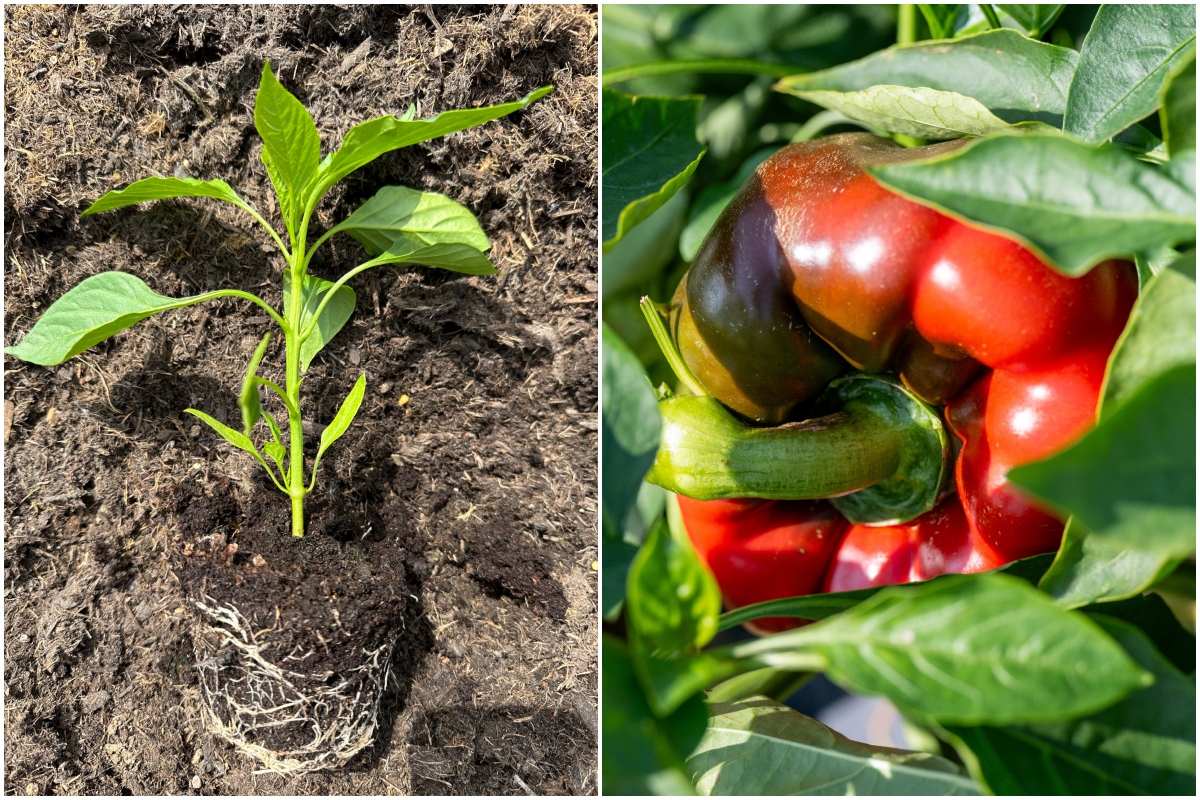
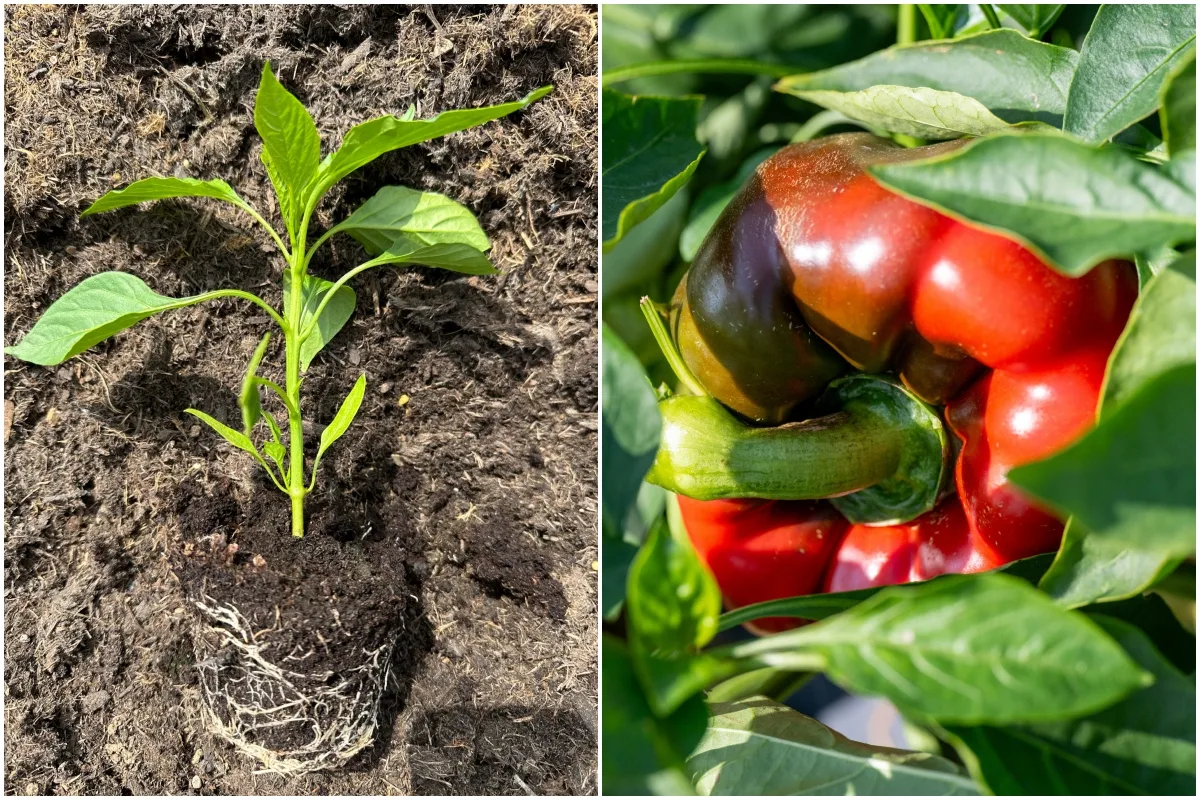
Pepper crops thrive in my sizzling, subtropical local weather. They flourish and supply tons of scrumptious peppers year-round. However final fall, I made a tragic mistake. I surrounded the poor issues with plenty of crops that shouldn’t develop close to peppers.
Pepper crops (Capsicum annuum) are perennial. You may not know that in the event you stay in a temperate area. However right here in Zone 10, it turns into apparent to any gardener.
They don’t die off utterly until we get a uncommon freeze. They’ll bloom and fruit all through the winter. If it will get actually chilly, they go dormant and begin rising once more within the spring.
So, I depart my pepper crops within the floor as a result of our winter climate is delicate. I do cowl them when frost is within the forecast. However I’ve by no means bothered to raise and overwinter them indoors like different gardeners do.
What Occurred to My Pepper Crops?
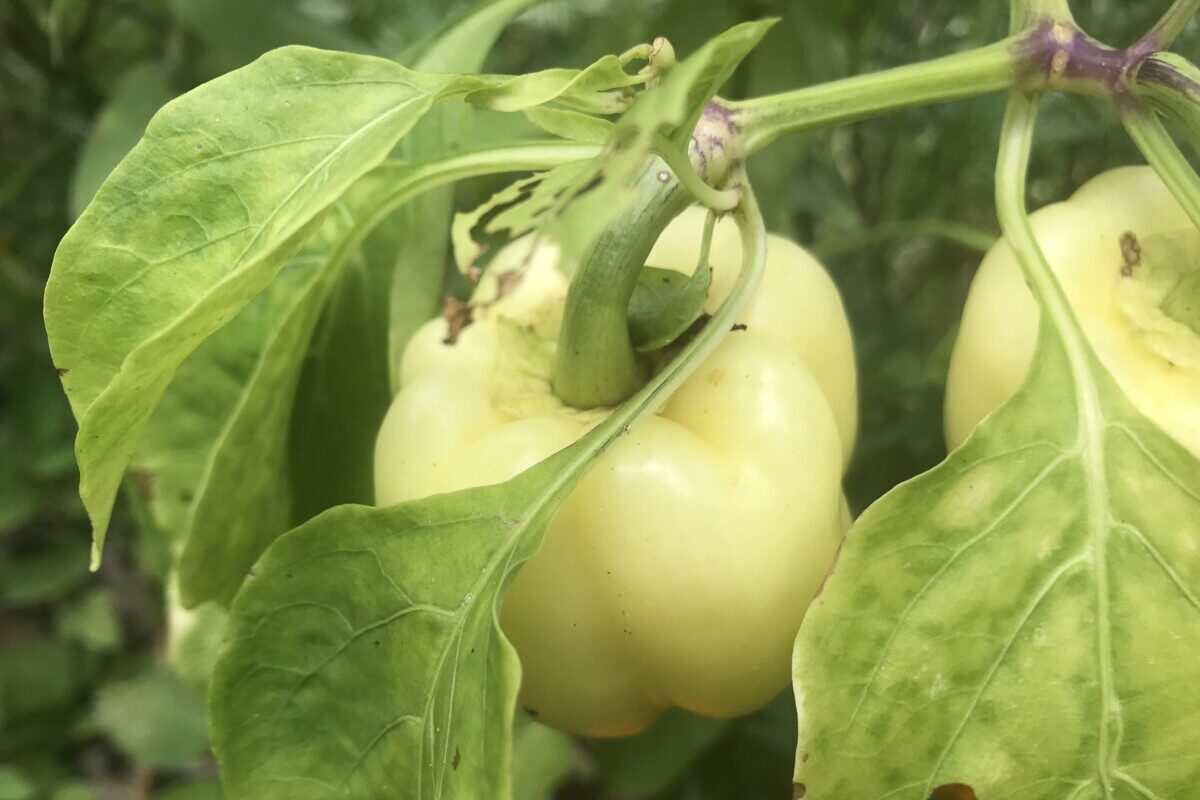
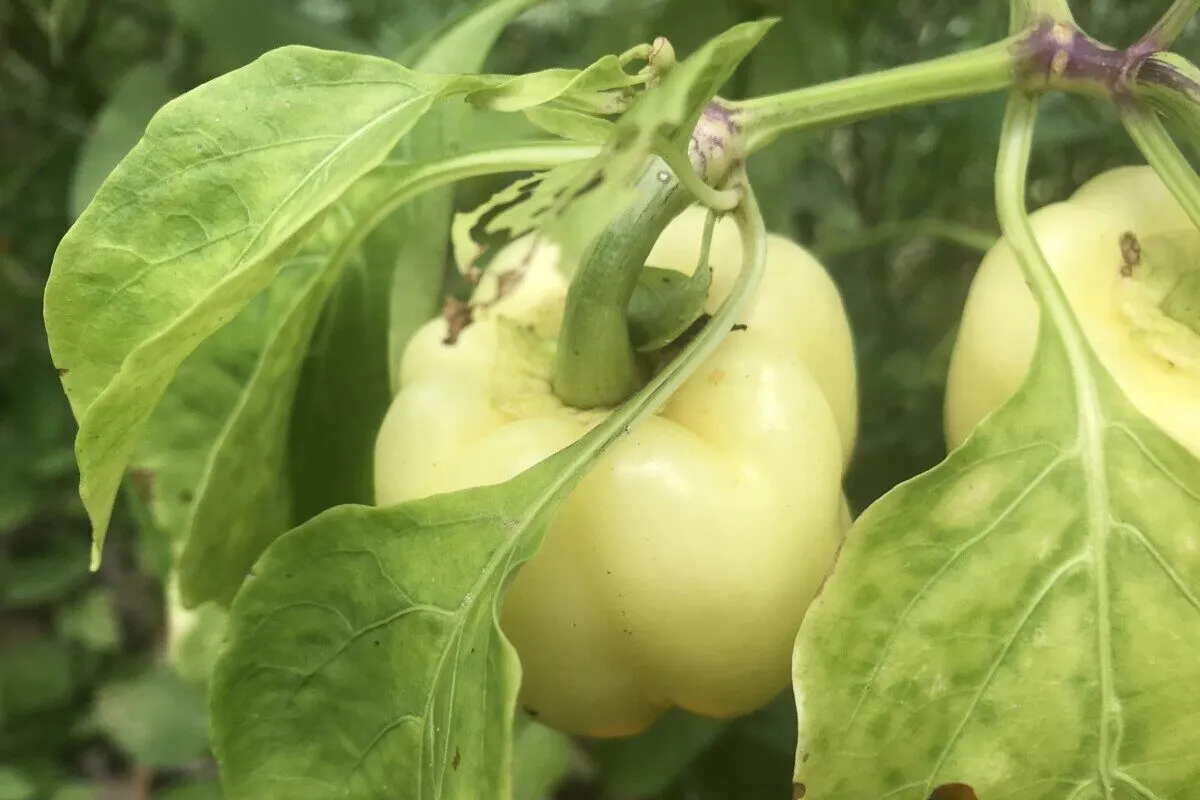
It appears my confusion in regards to the lifespan of peppers led to a critical gardening blunder. Final fall, I left them in place as regular and planted my winter greens round them.
Regardless of loads of rainfall and temperatures within the 80s, my pepper crops started to shrivel even earlier than they may fruit.
Once they did fruit, they fell over, too weak to carry themselves up any longer. The peppers they produced have been tiny and deformed.
Cautious What You Plant The place
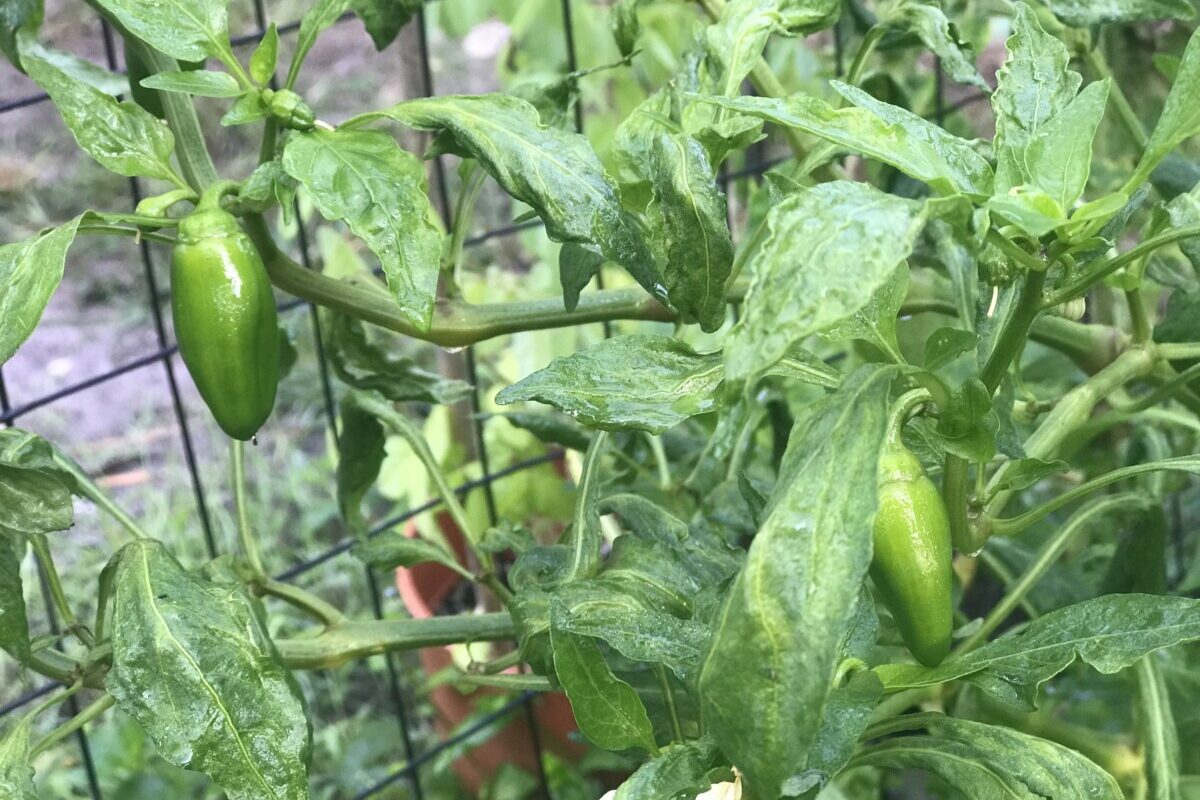
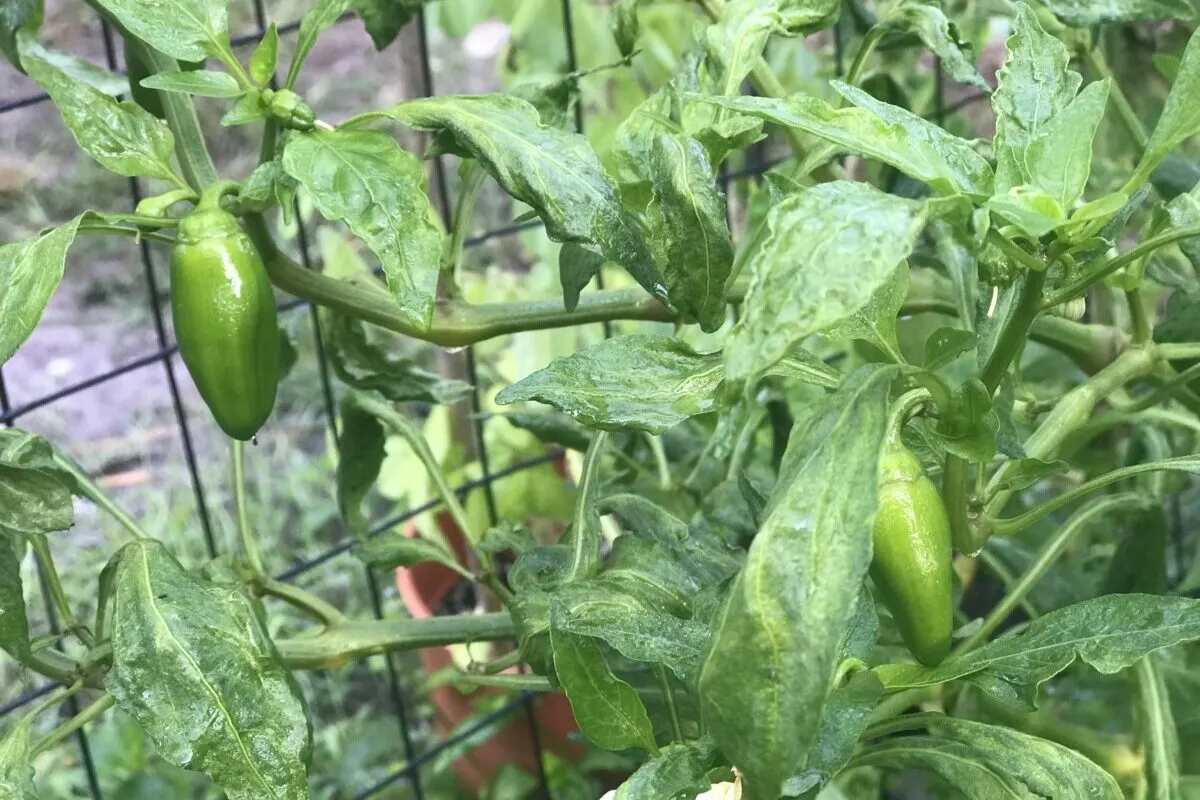
In the event you like to develop peppers, both candy or sizzling, there are crops you’ll want to keep away from.
In my case, most of my winter greens are a pepper plant’s worst enemy.
In a nutshell, some crops are “allelopathic.” This implies they launch chemical compounds from their roots, stems or leaves that influence close by crops. They will stunt their progress or negatively have an effect on their productiveness.
Different crops launch sure chemical compounds from their roots that solely injury particular crops or plant households. These Capsicum enemies are crops that shouldn’t develop close to peppers.
Likewise, some crops are badly affected by peppers. You’ll wish to keep away from inserting your peppers wherever close to them.
1. Sunflowers (Helianthus annuus)
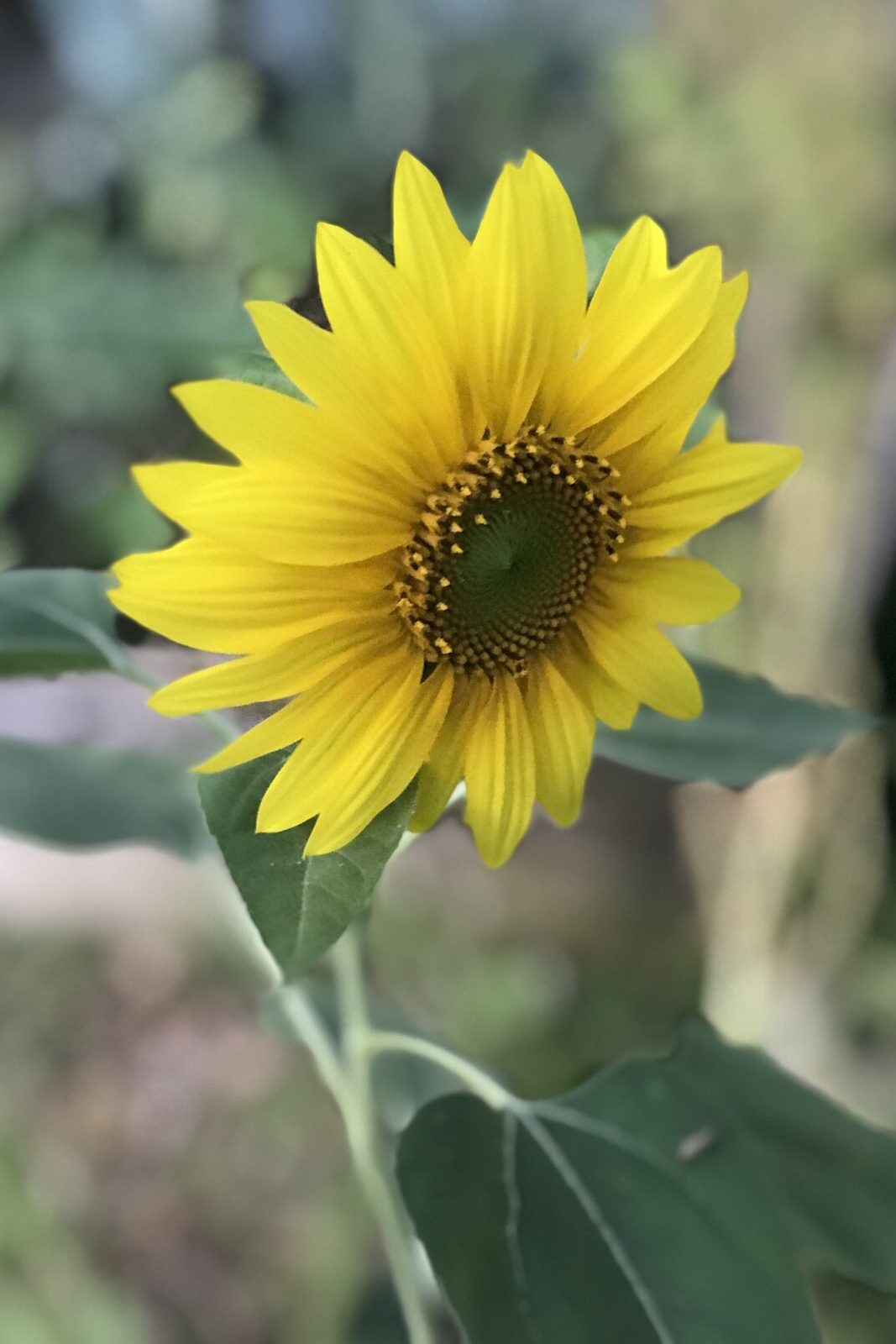
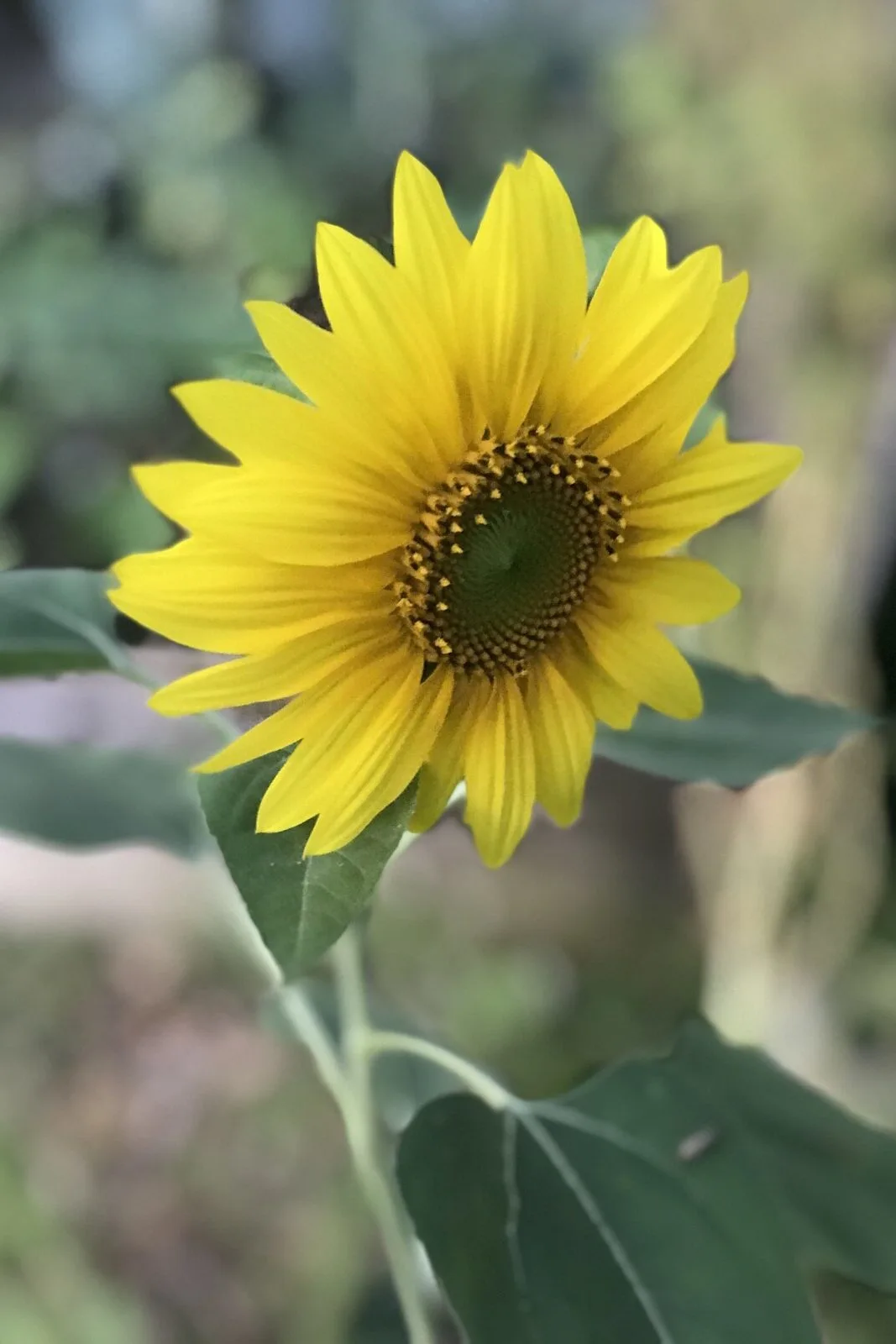
Sunflowers entice pollinators, however they’ll additionally launch “allelochemicals” from their roots, inhibiting seed germination and stunting the growth of different crops.
This contains peppers, which endure from poor root growth when planted too near sunflowers.
You’ll be able to plant them 8 to 10 ft away in their very own patch to take pleasure in their insect administration advantages whereas avoiding their downsides.
2. Goldenrod (Solidago spp.)
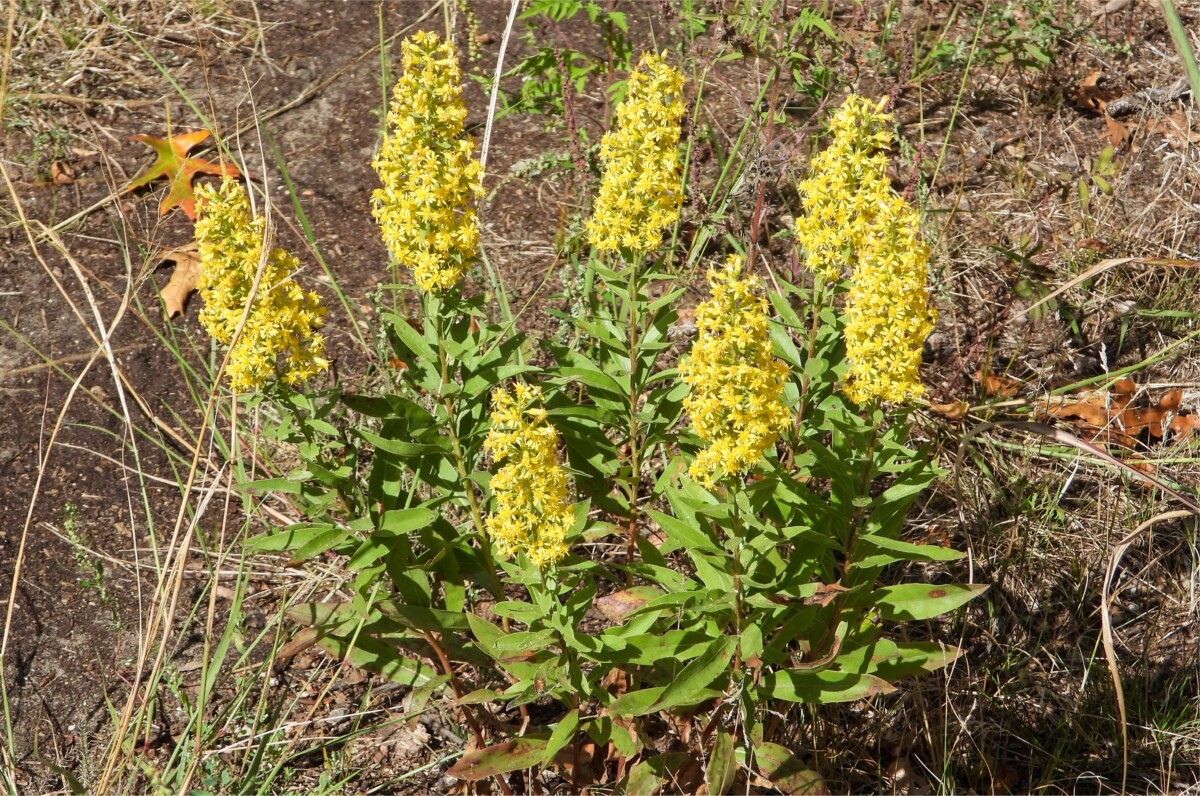
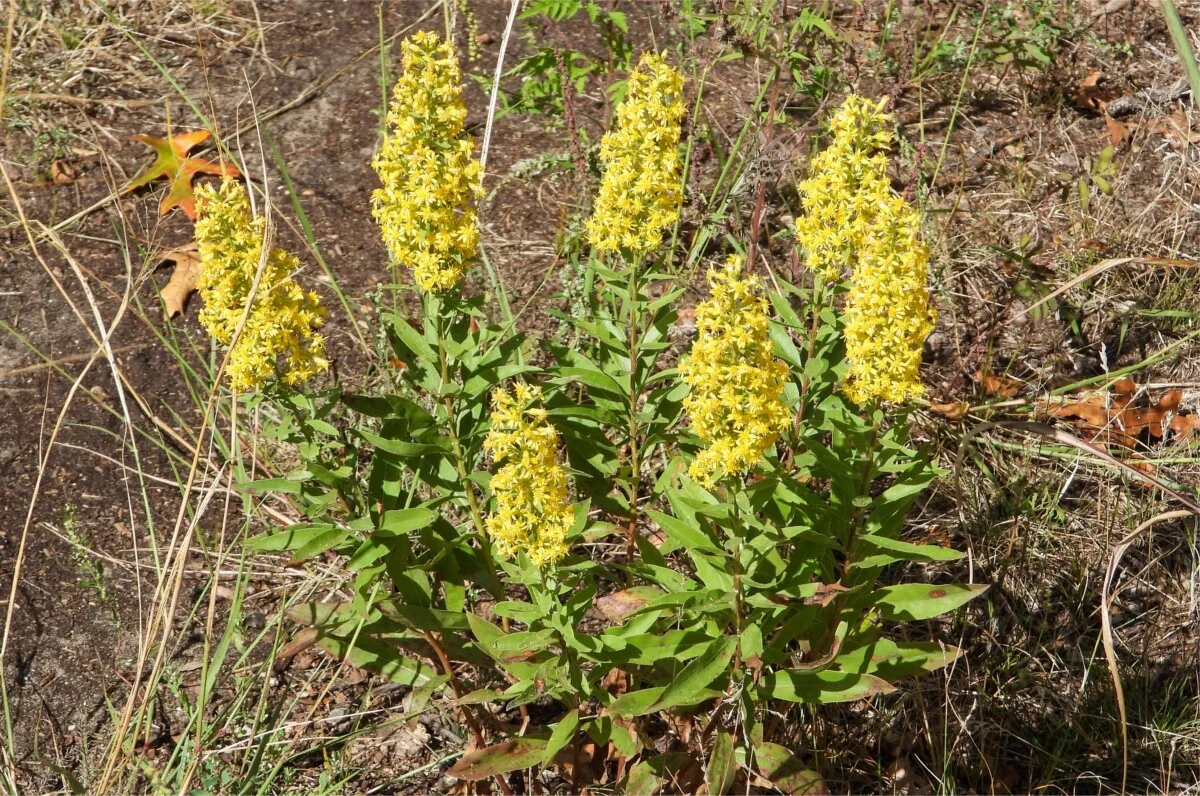
Goldenrod is one other flowering plant that brings in all of the bees and butterflies. Sadly, its roots produce chemical compounds that hurt some vegetable garden crops.
On this case, relegate them to a wild nook of your backyard to allow them to proceed to learn nature with out impacting your pepper harvest.
3. Lavender (Lavandula spp.)
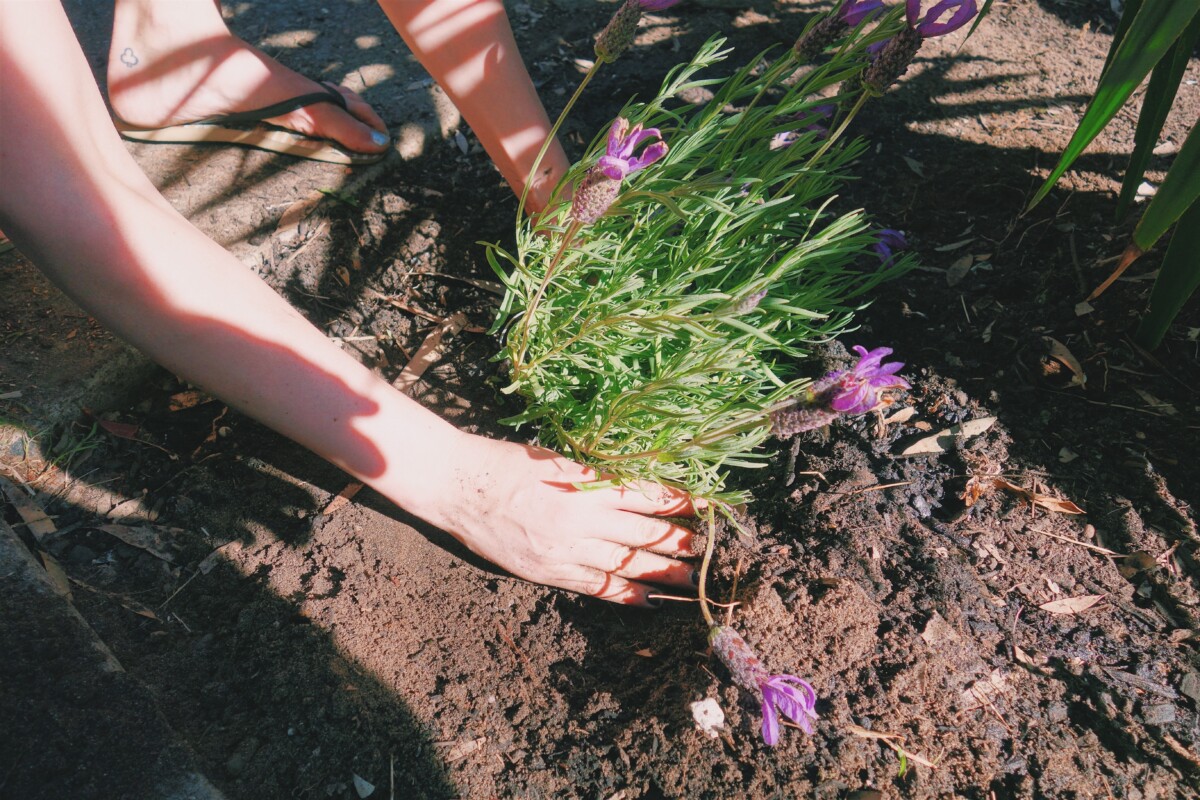
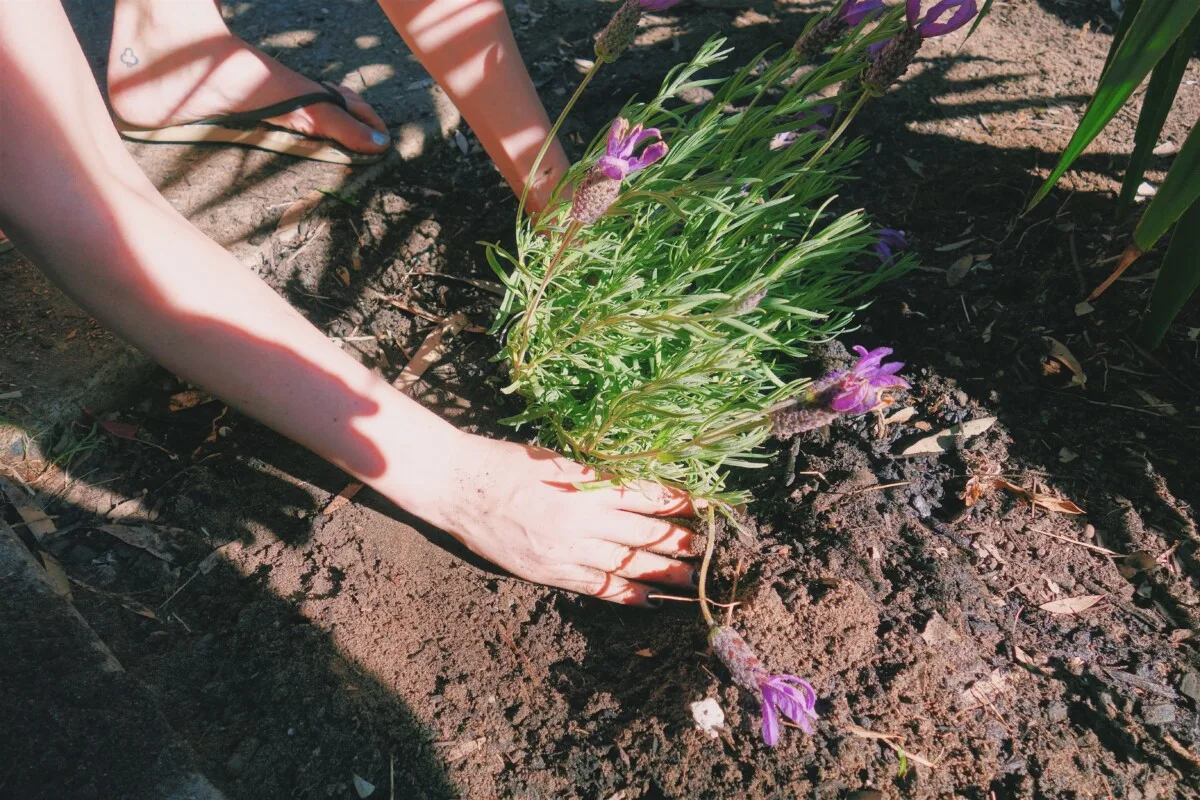
Lavender is a shocking addition to this group. Nevertheless, it produces the allelochemical coumarin, which inhibits the expansion of close by crops.
It’s not clear if it’s particularly harmful for pepper crops, however experiments proving that lavender extract works as a weedkiller is sufficient to persuade me.
4. Fennel (Foeniculum vulgare)
Fennel has no associates within the backyard. It releases “phenols” into the soil, which stunts the expansion of other plants. However our editor, Tracey, thinks you must develop it anyway, learn right here to discover ways to do it with out ruining different close by veggies.
Nightshade crops (like peppers and tomatoes) and legumes (beans and peas) are notably susceptible.
5. Strawberries (Fragaria × ananassa)
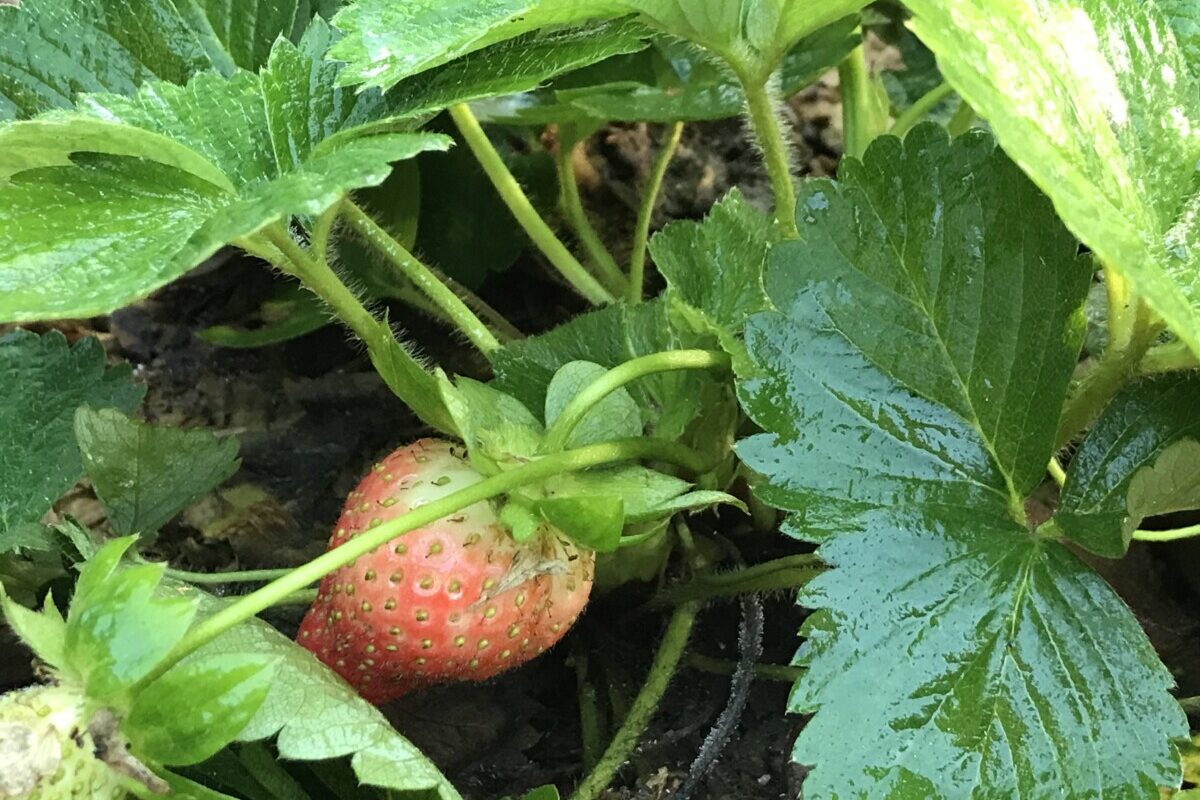
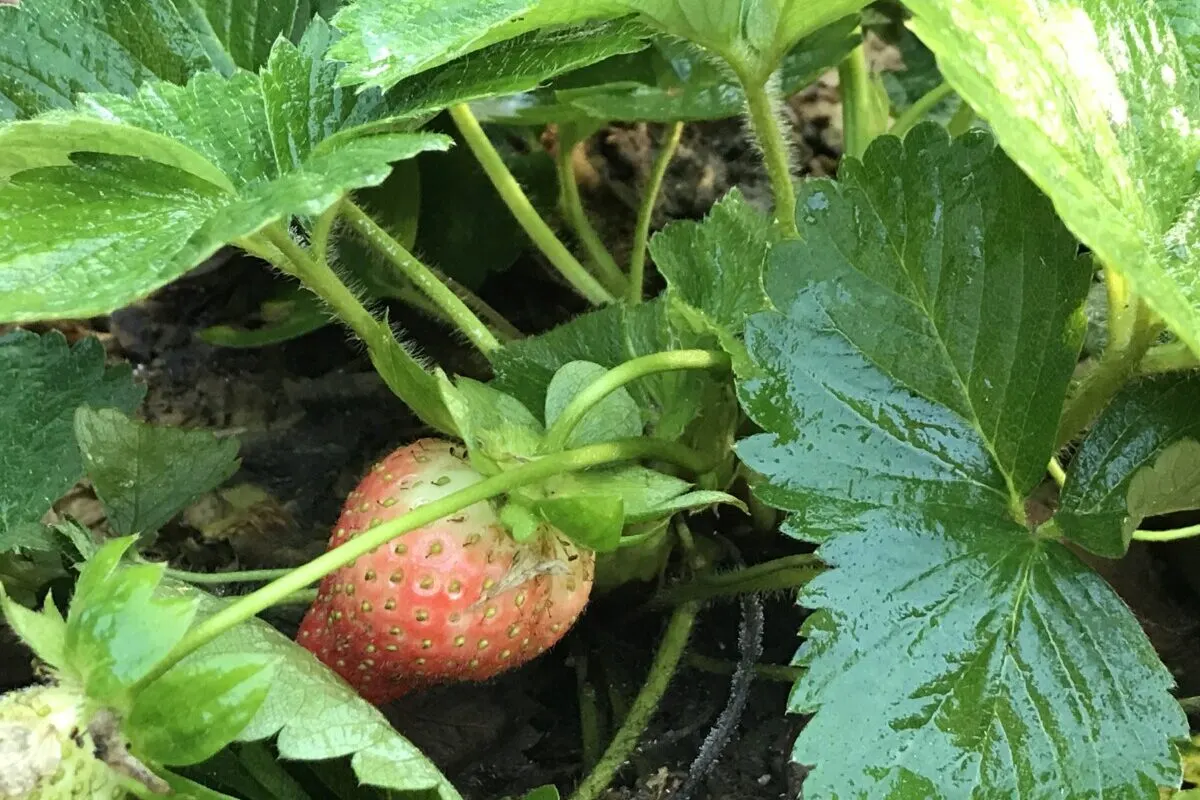
The place strawberry crops are grown as perennials, a fungal illness known as anthracnose can linger in the soil. The spores can construct up, affecting each peppers and berry crops.
It spreads in a short time, and also will have an effect on corn, cucumbers, and tomatoes.
Why threat each crops to save lots of somewhat house? Plant them far aside in your backyard.
6. Potatoes (Solanum tuberosum)
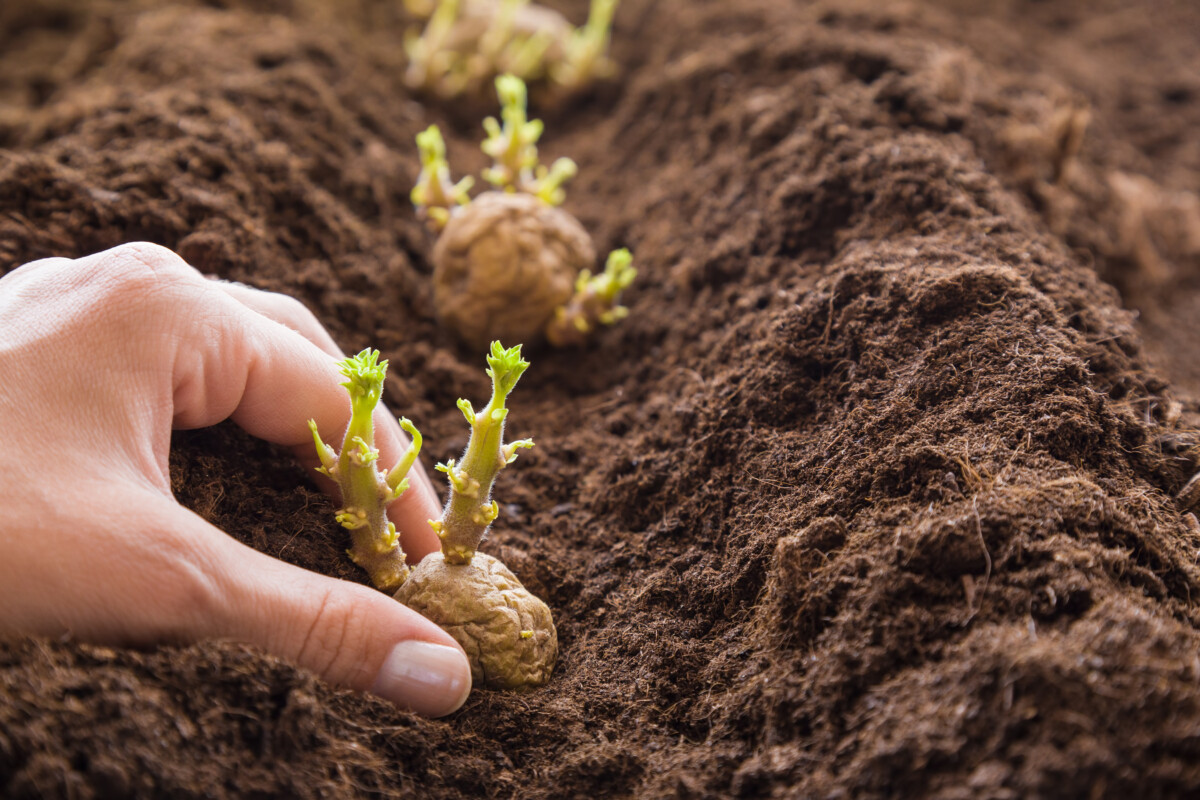
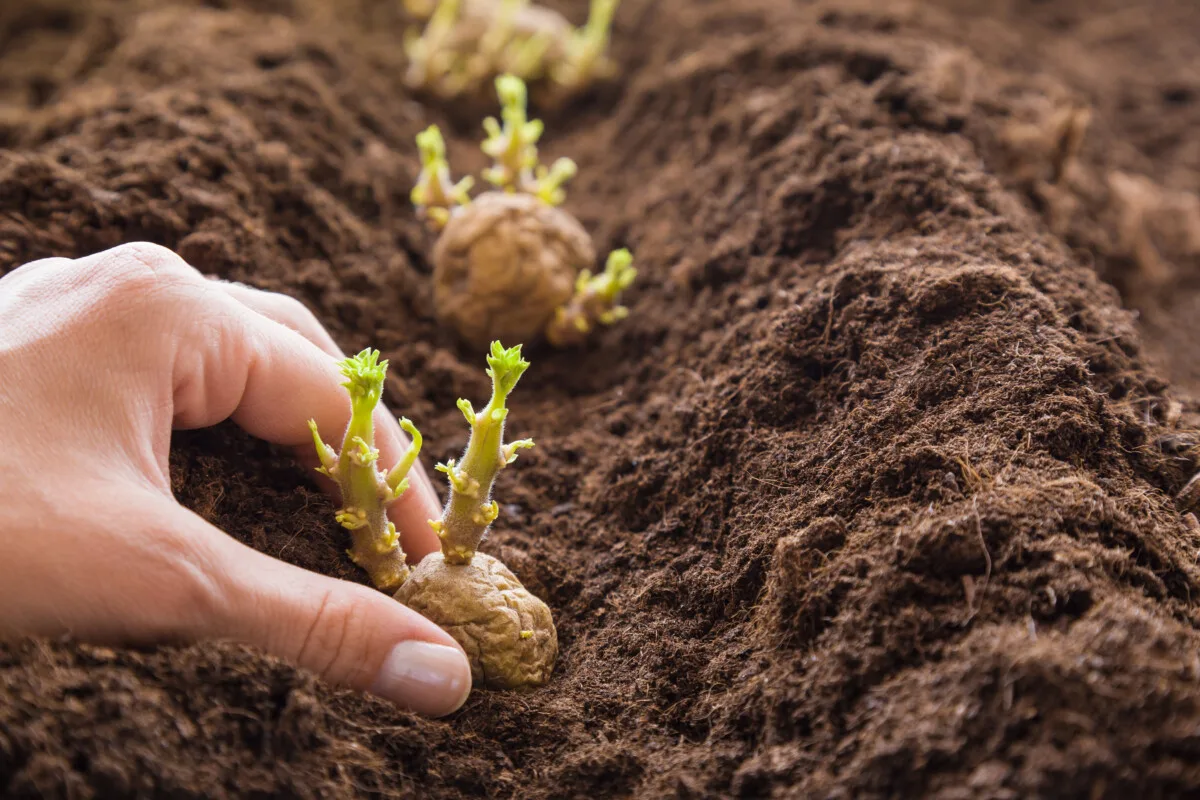
White potatoes (generally known as Irish potatoes) are in the identical plant household as pepper crops. This implies they are going to compete for a similar vitamins whereas attracting the identical pests. They’re additionally susceptible to the identical illnesses.
Whilst you can rigorously plant peppers with cousins like tomatoes in the event you give them sufficient room, potatoes are totally different. That’s as a result of, in three or 4 months, you’ll have to dig up the entire backyard mattress to reap your spuds. Simply when your pepper crops are beginning to take off.
Do you actually wish to threat damaging their delicate roots?
7. Black Walnut (Juglans nigra)
Black Walnut is one other a kind of crops which might be a hazard to peppers. The leaves, nut hulls and roots produce juglone, which impacts a lot of the crops across the tree.
It’s notably bad for nightshades, and leads to poor root progress, yellowing, and wilting.
8. Brassicas (Brassica oleracea)
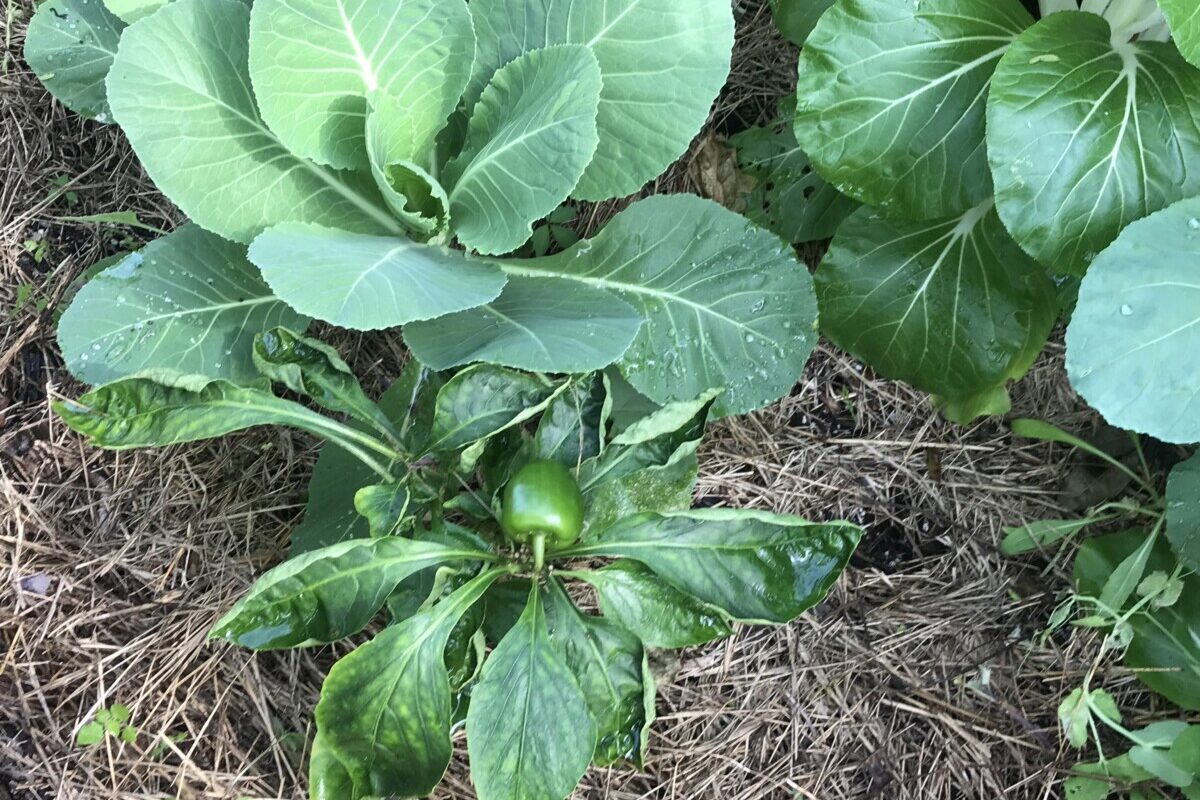
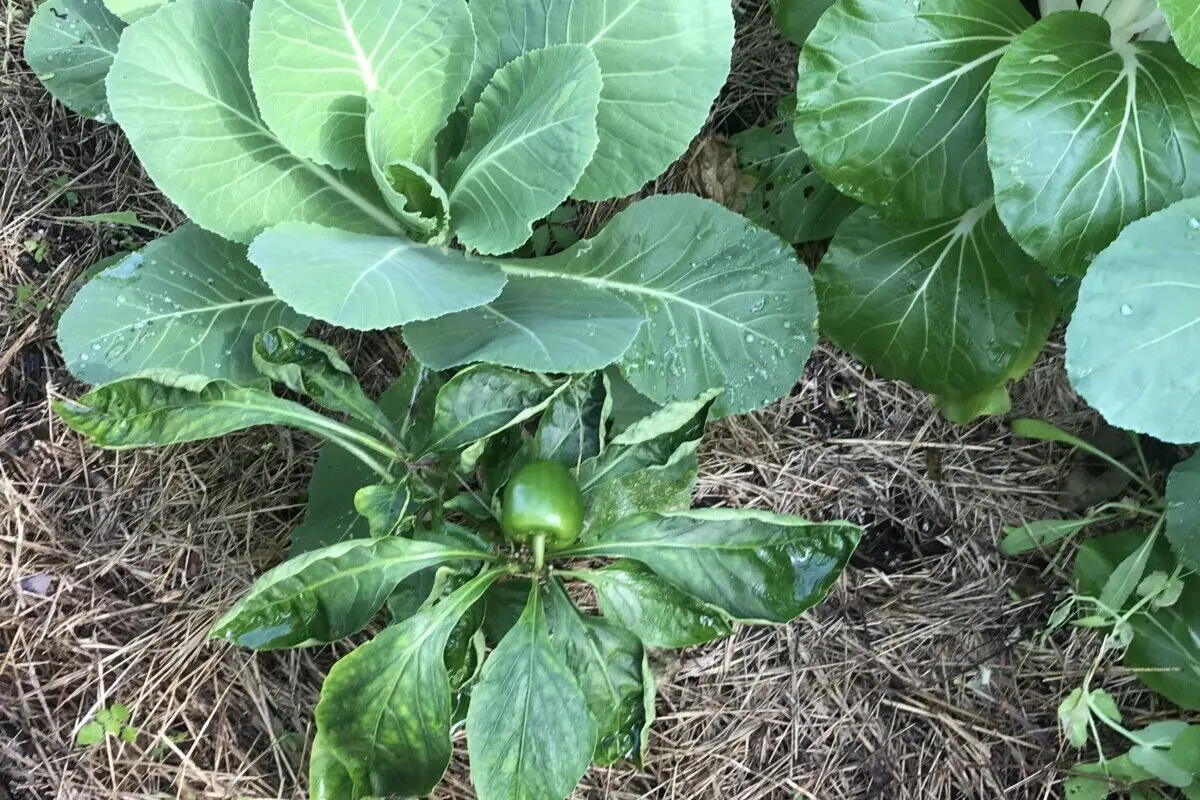
This pepper plant by no means had an opportunity surrounded by all these cabbages.
Subsequent on the checklist is my pepper crops’ major nemesis — brassicas. This contains cabbage, broccoli, kale, cauliflower, kohlrabi, and mustard greens.
Brassicas produce glucosinolates and launch them when leaves and roots decompose within the soil. Whereas they’re a wholesome a part of the human diet, they aren’t good for the well being of other plants.
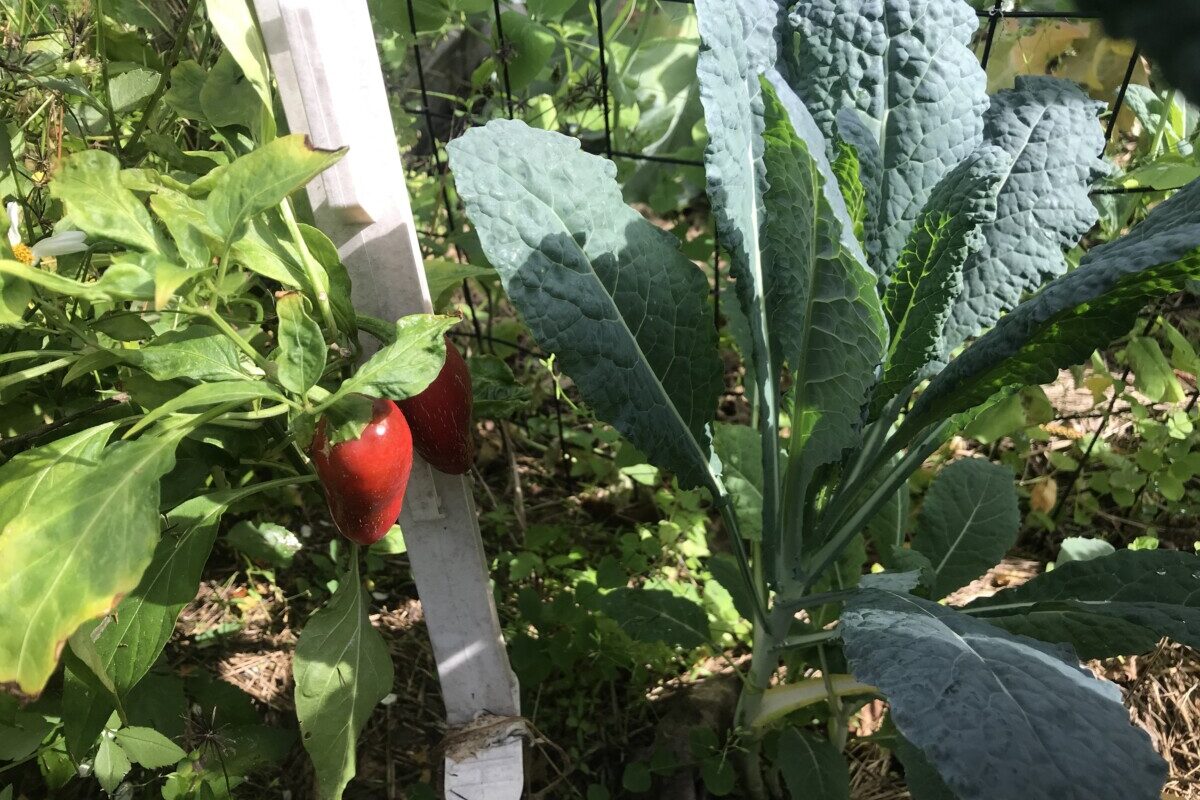
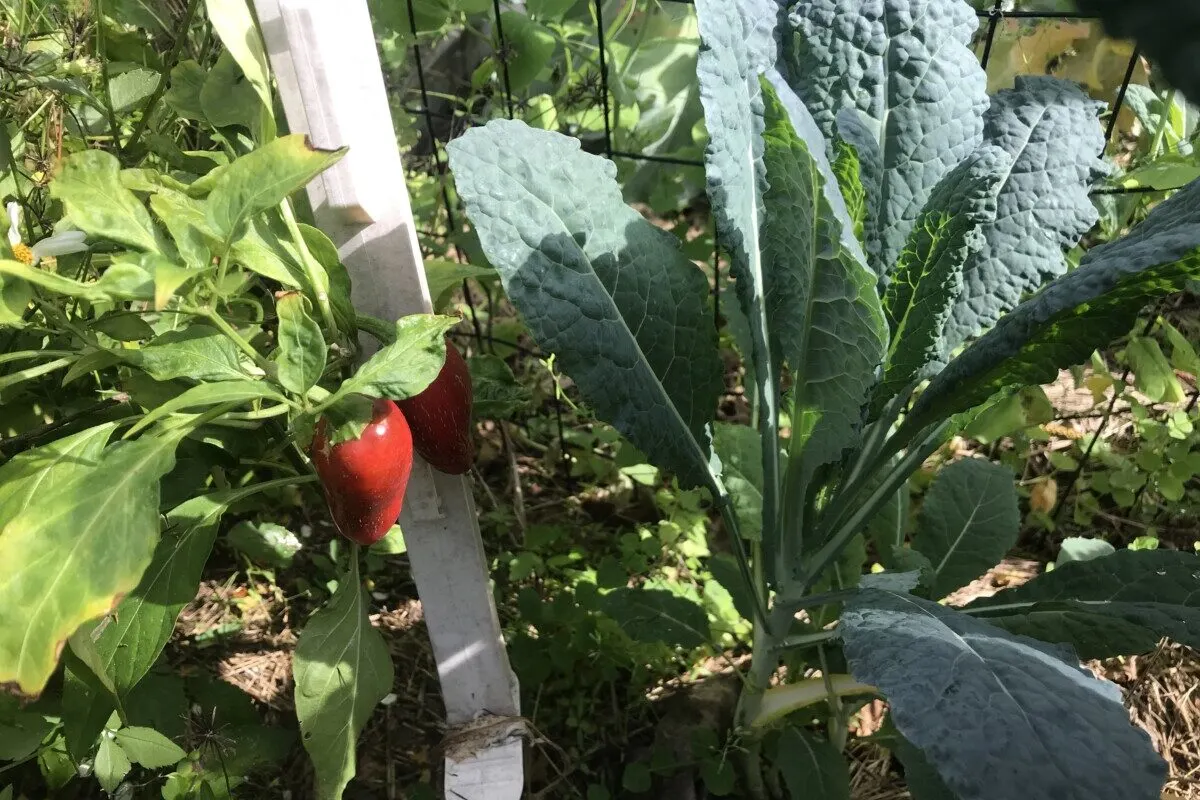
These jalapeño peppers turned so weak when planted close to kale that I wanted to supply assist to maintain them upright.
One of many newest traits in sustainable farming is planting mustard as a winter cowl crop to forestall weed seeds from germinating within the spring.
These cruciferous greens develop quick within the cooler months, even with shorter daytime. They will simply out-compete pepper crops, that are at their most susceptible, bullying them for daylight and stealing their vitamins.
9. Stone Fruit Timber (Prunus spp.)
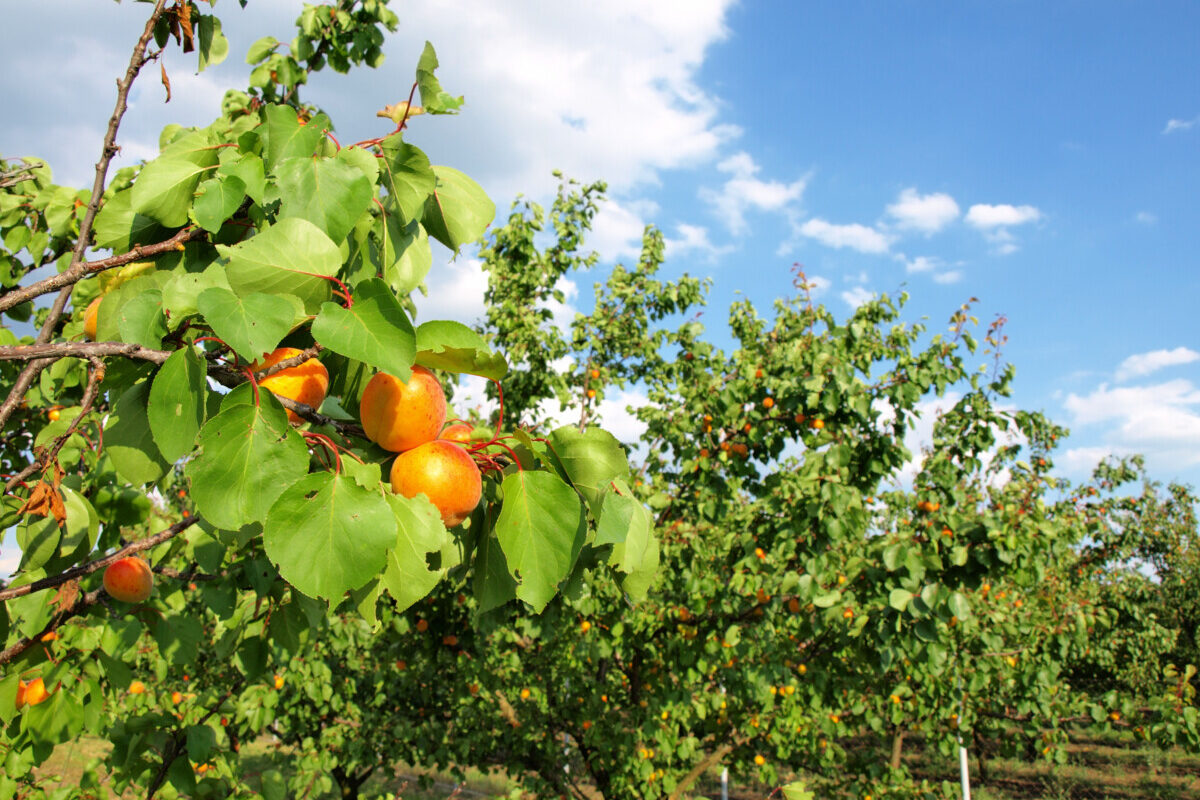
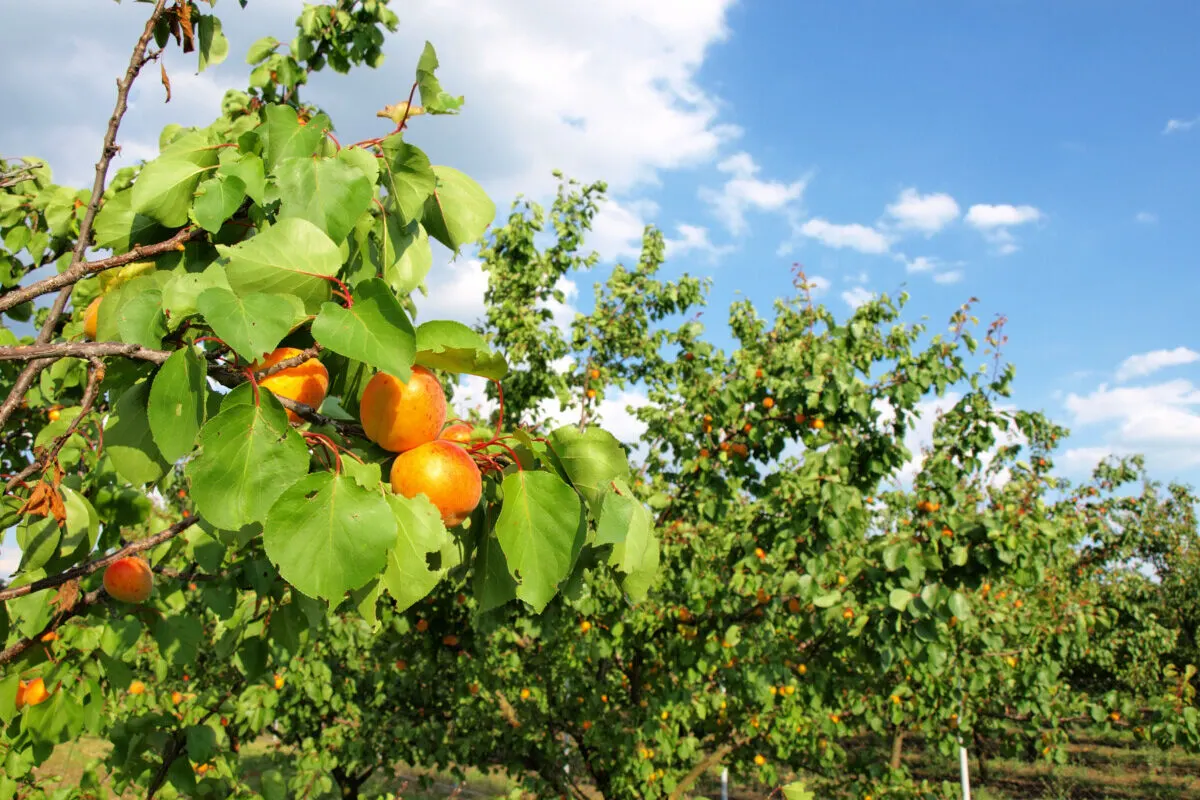
Whereas the earlier crops are dangerous for rising pepper crops, your pepper crops are dangerous for stone fruit timber. Apricots, nectarines, and plums are notably susceptible to bacterial leaf spot. Your peppers can unfold it to your fruit timber.
It’s annoying to lose a 12 months’s harvest of recent peppers, for positive. Nevertheless, it’s devastating to lose a 5-year-old fruit tree. Bacterial spot can depart your fruit timber susceptible to different illnesses and make them extra engaging to bugs.
These infestations may end up in a deadly downward spiral that impacts their general hardiness when winter hits.
10. Eggplant (Solanum melongena)
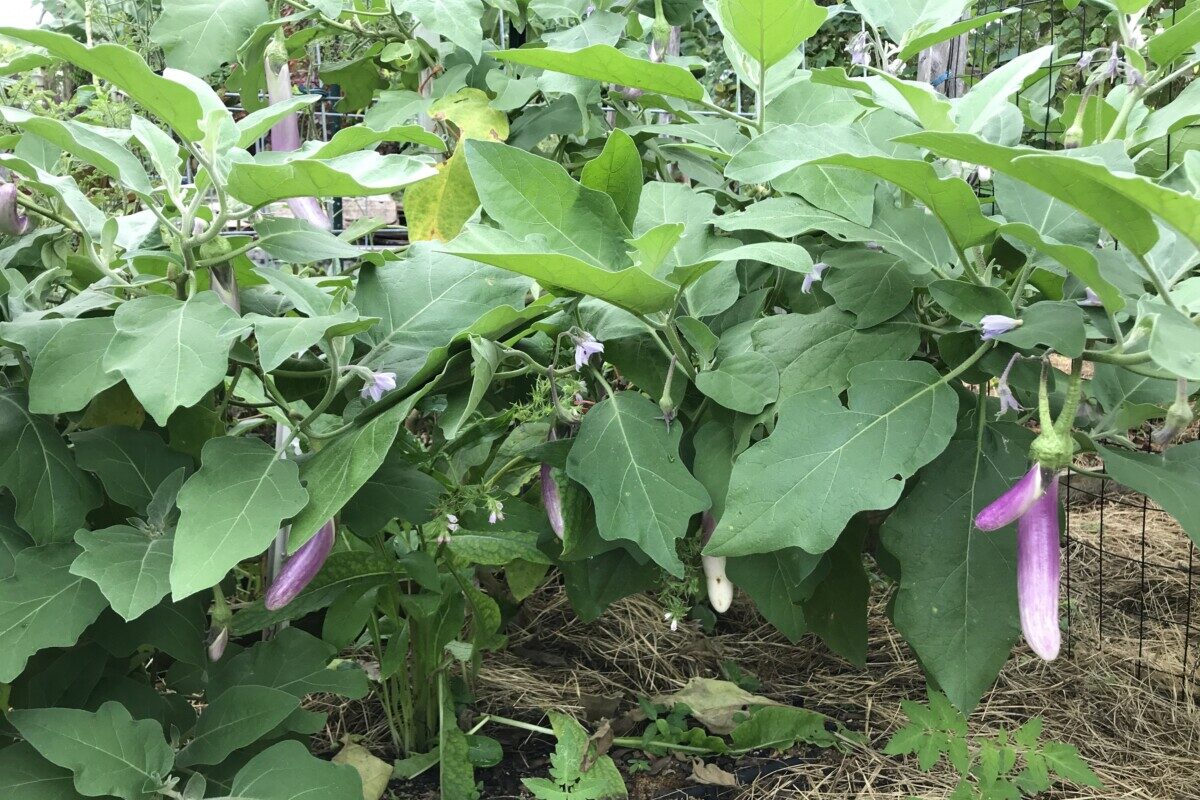
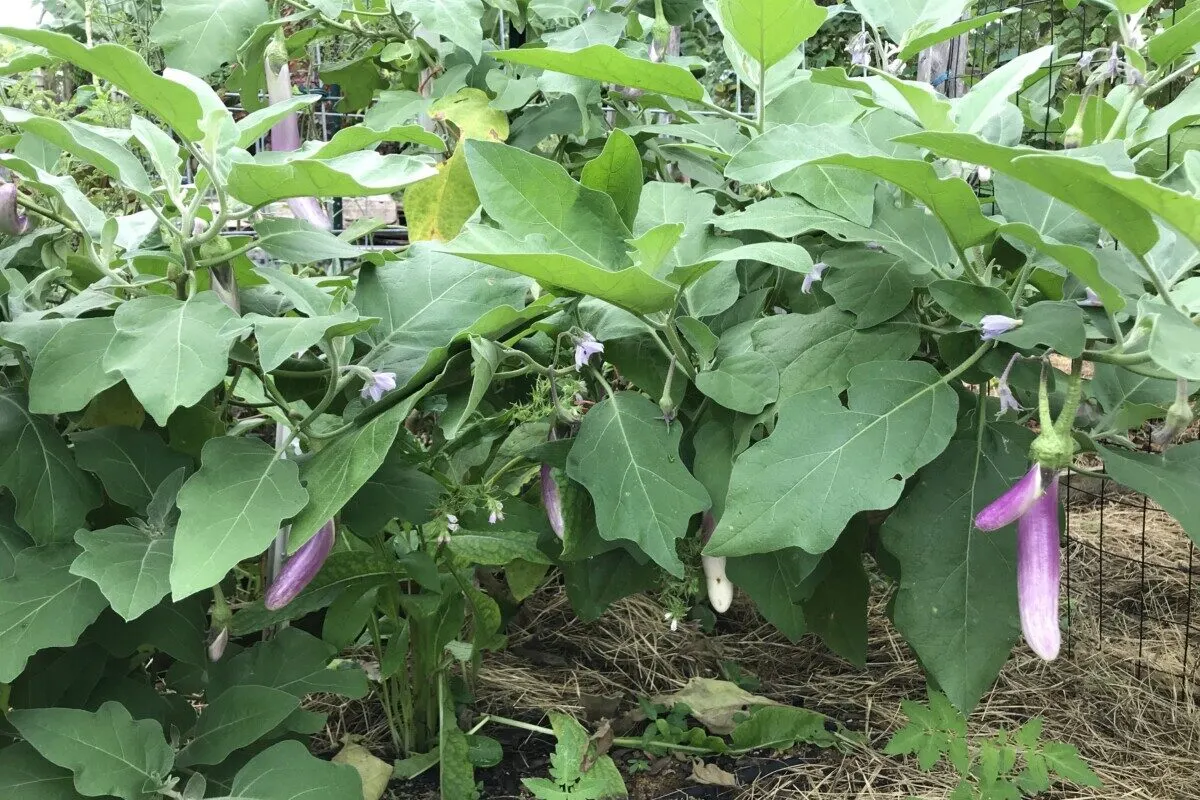
White Bride Eggplant
Whilst you can safely plant your peppers close to different nightshade crops like tomatoes and eggplants, researchers discovered that aphids prefer eggplant over peppers, so planting them collectively shouldn’t be very best.
Including different entice crops that lure aphids away from each crops is one tactic for getting an excellent harvest. Some flower and herb crops draw aphids in and deter them from consuming your vegetable crops.
Let’s check out just a few of these companion crops.
Good Companion Crops for Peppers
Companion planting is a good technique for managing pests within the backyard and bettering the standard of your backyard soil.
Rising companion crops can deter or confuse pests. They may also attract pollinators. Within the final 10 to twenty years, scientists have found many useful companion crops that may assist your vegetable crops take in extra vitamins.
You’ll be able to interplant these beneficials between your peppers or use them as a border across the backyard mattress.
1. Basil (Ocimum basilicum)
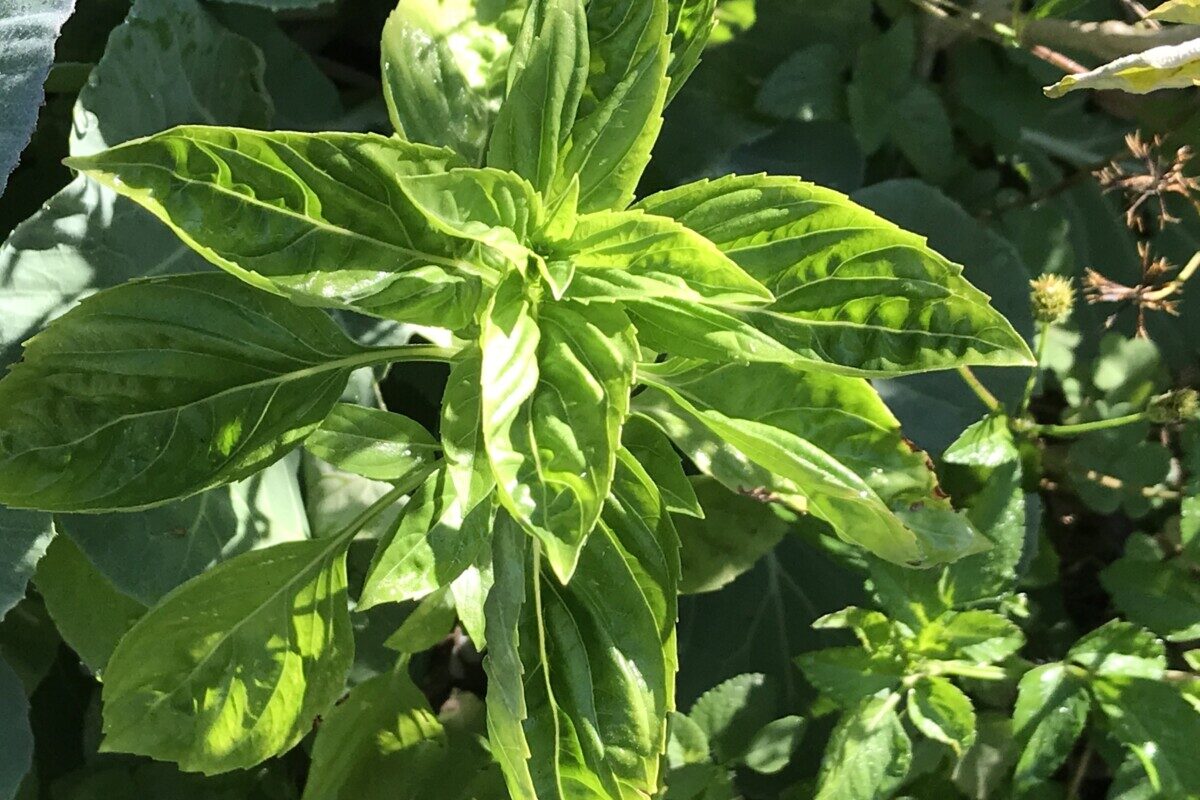
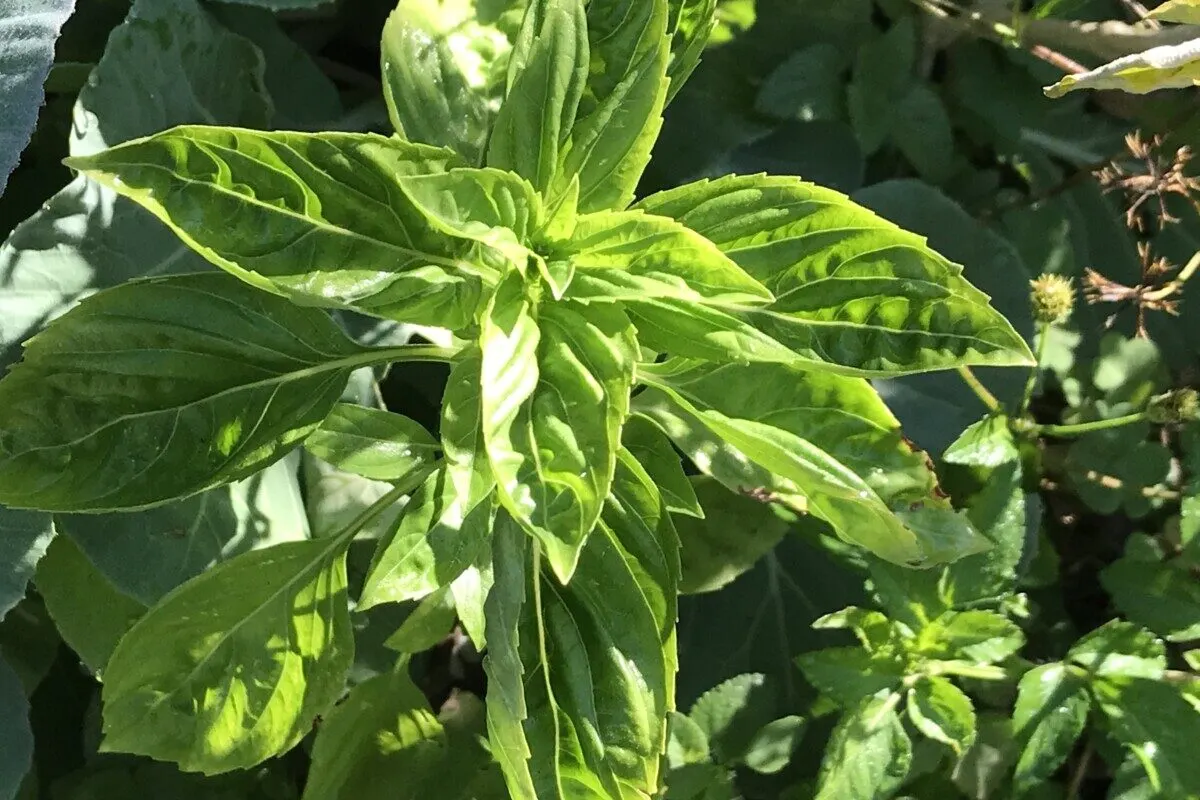
Basil is a well-liked companion plant for each tomatoes and peppers. This sweet-smelling herb works as a repellent in opposition to thrips and aphids attributable to its linalool content.
2. Rosemary (Rosmarinus officinalis)
Just like basil, the strong-smelling fragrant oils on this culinary herb repels insects when planted near pepper crops. Plant them about 1.5 ft away out of your peppers for the very best outcomes.
As well as, they’ll present shade to guard your peppers from sunscald.
3. Alliums
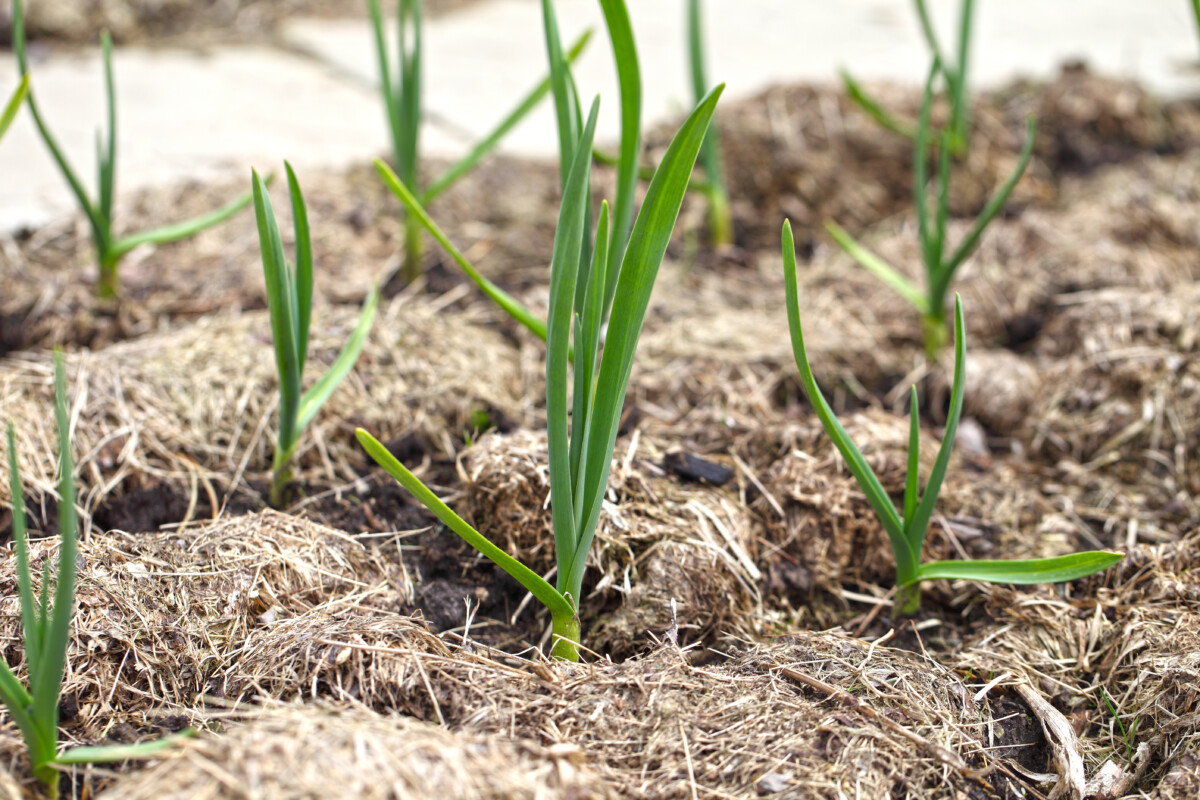
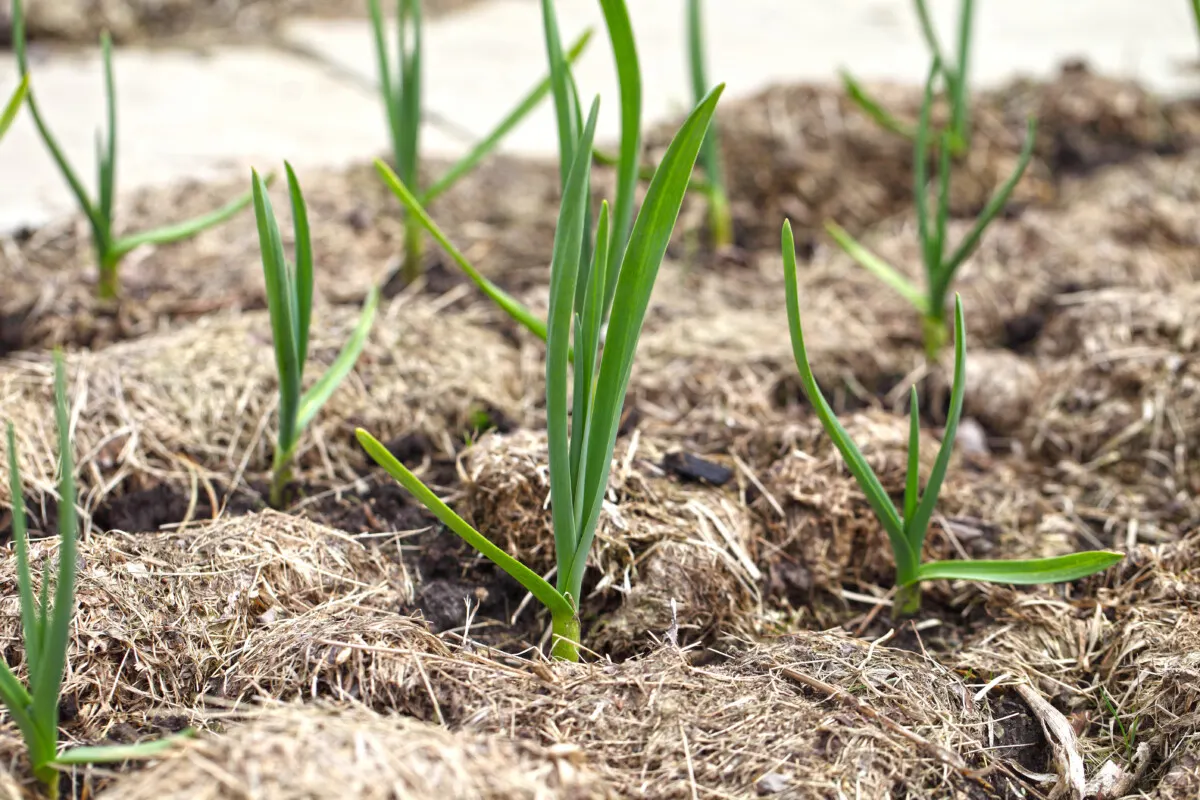
Alliums, comparable to garlic, onions and chives, repel bugs by masking the odor of extra fascinating crops. They launch sulfuric compounds that deter pests. Their flowers additionally entice useful pollinators which might be the pure enemies of pest bugs.
Whereas all alliums will assist shield your pepper crops from aphids, chives work best.
Garlic can also be an efficient allium companion plant for peppers. Rising garlic will increase the enzymes that break down nitrogen and sugars in the soil. This makes it simpler for pepper crops to soak up these vitamins for progress.
4. Marigolds (Tagetes spp.)
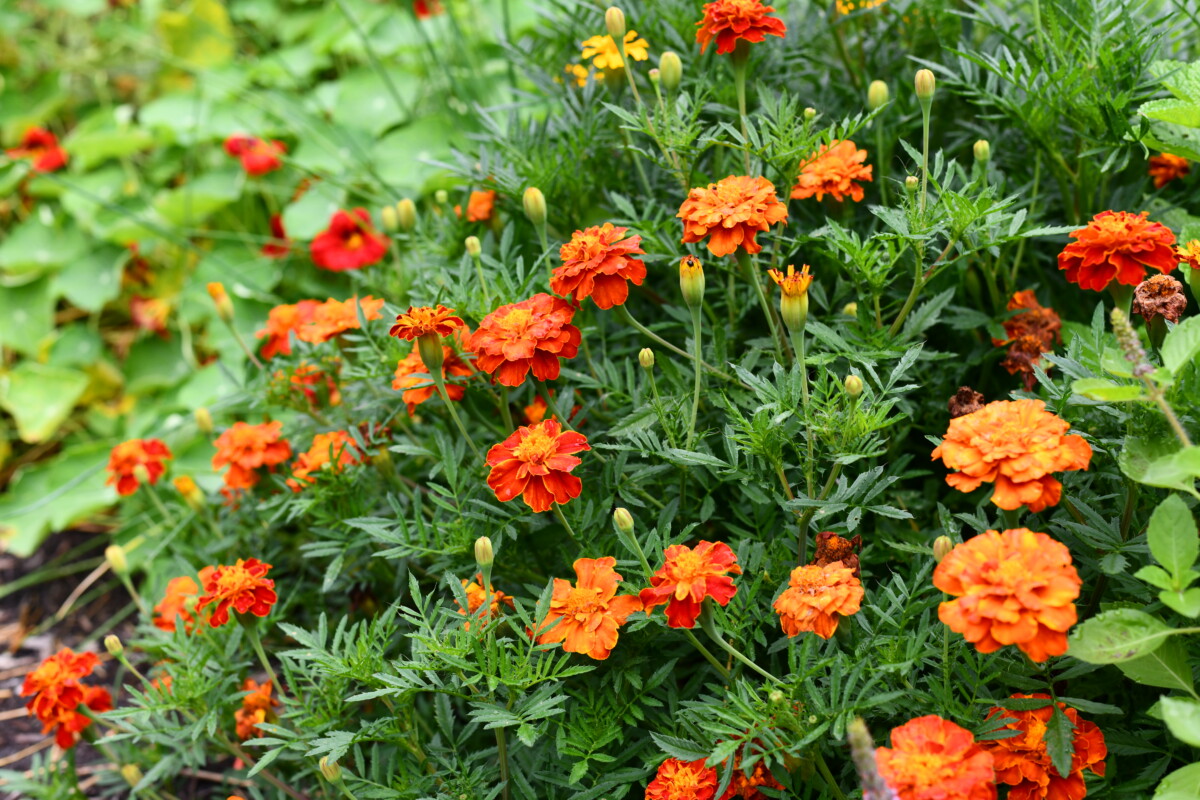
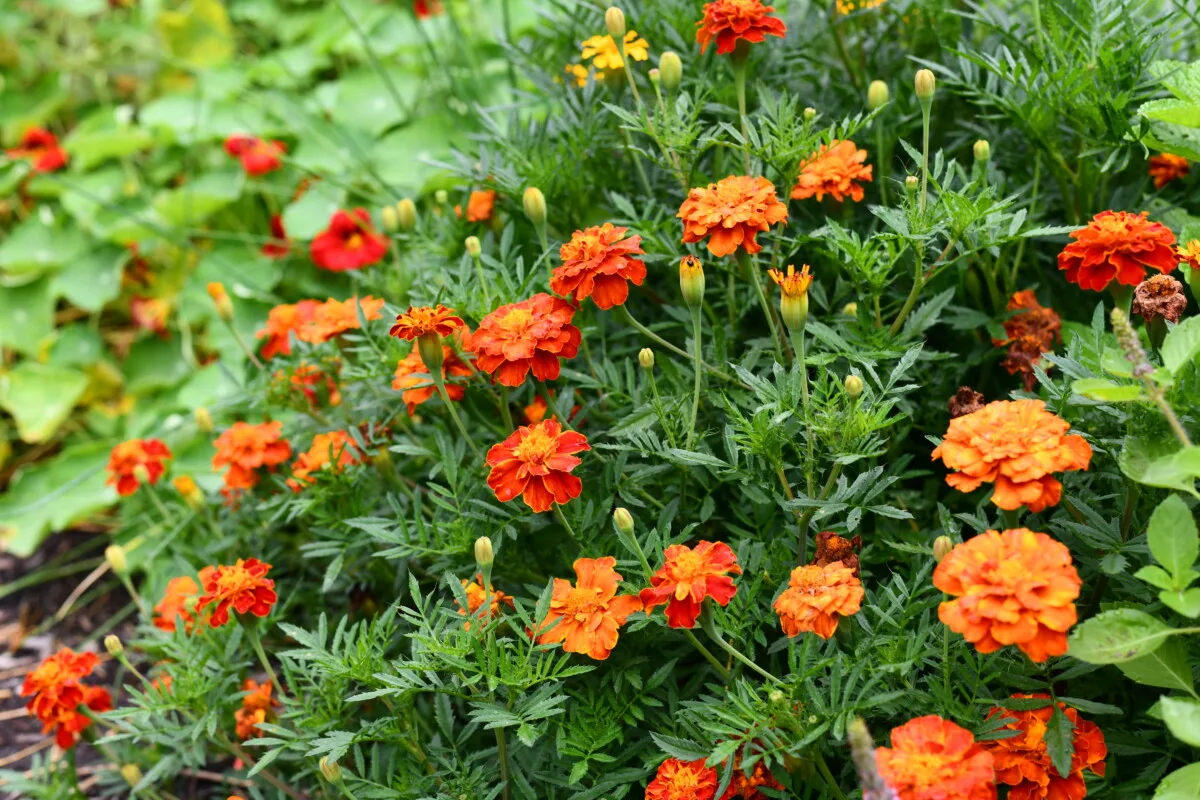
Marigolds are actual workhorses within the backyard. Their cheerful gold and orange flowers entice useful predator bugs like lacewings, ladybugs, and wasps. In addition they attract bees for pollination.
However it’s their effect on nematodes that make them top-of-the-line crops to develop close to peppers.
Root-knot nematodes generally is a loss of life sentence on your pepper crops. And French marigolds work as each a entice crop and a nematicide for root knot nematodes.
French marigolds entice these killers to colonize their roots, the place the pure biocidal alpha-terthienyl prevents them from growing and reproducing.
Whitefly Repellent
My very own backyard enemy when rising peppers has been whitefly. I’ve discovered sprinkling the crops with floor cinnamon helps, however this turns into tedious as soon as they’re planted within the backyard.
Marigolds produce a chemical known as limonene, which repels whiteflies from tomatoes.
I’ll actually be planting extra marigolds this 12 months.
5. Borage (Borago officinalis)
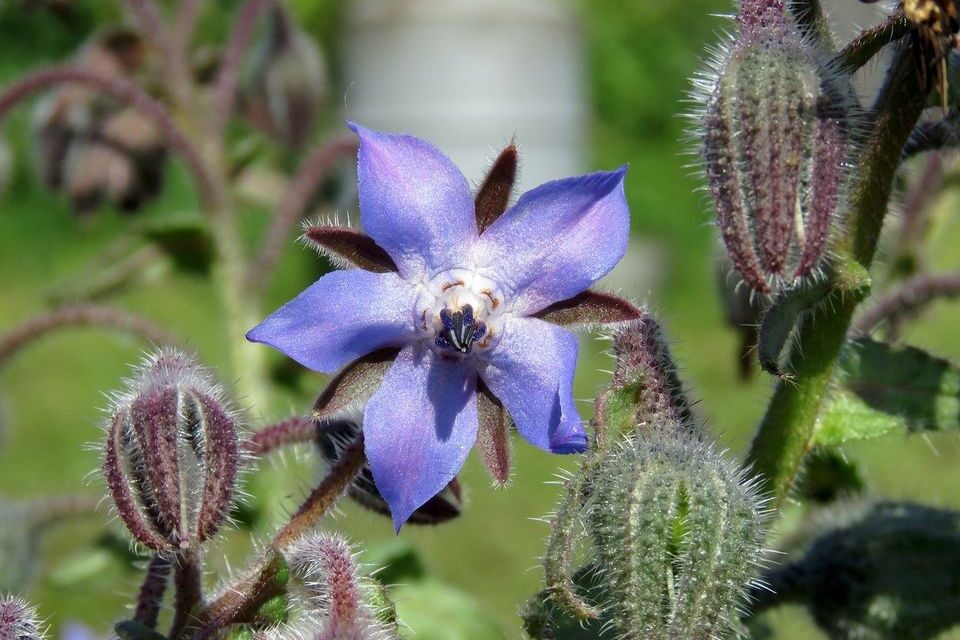
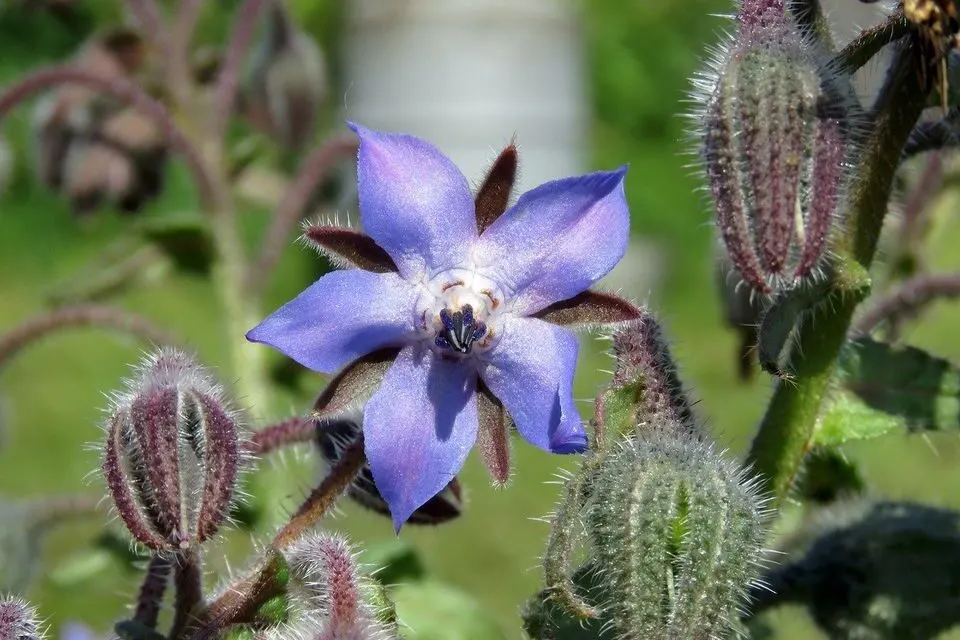
Borage is a flowering herbaceous plant recognized for its skill to draw bees. When planted close to habanero peppers, yields increased due to the rise in pollinators.
Together with drawing in bees, borage additionally helps to repel the hornworms that plague many residence gardeners.
6. Nasturtiums (Tropaeolum majus)
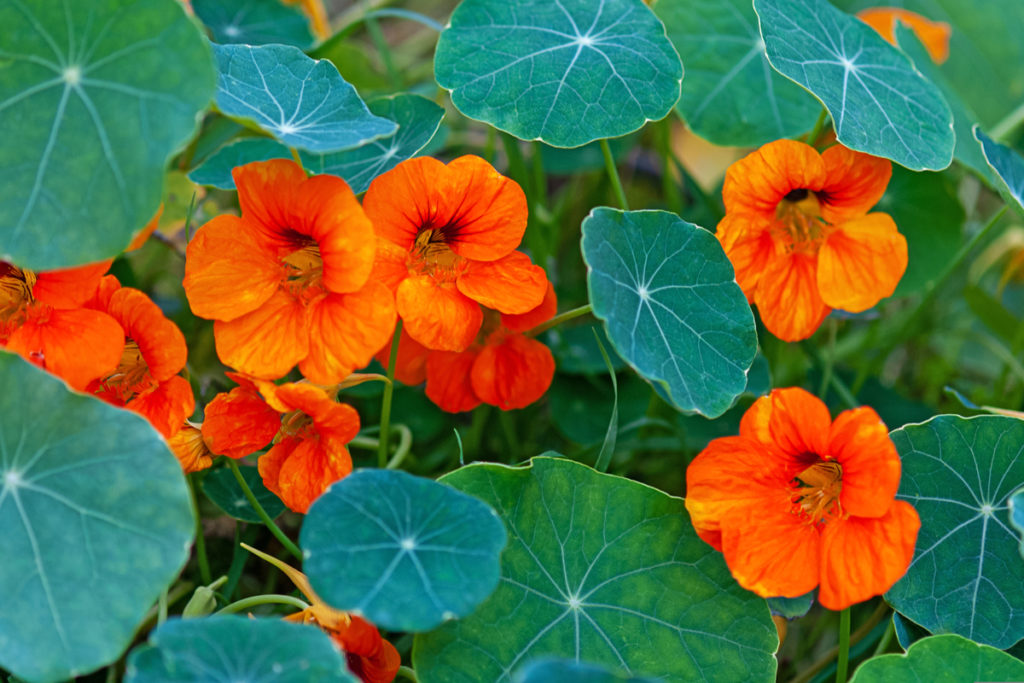
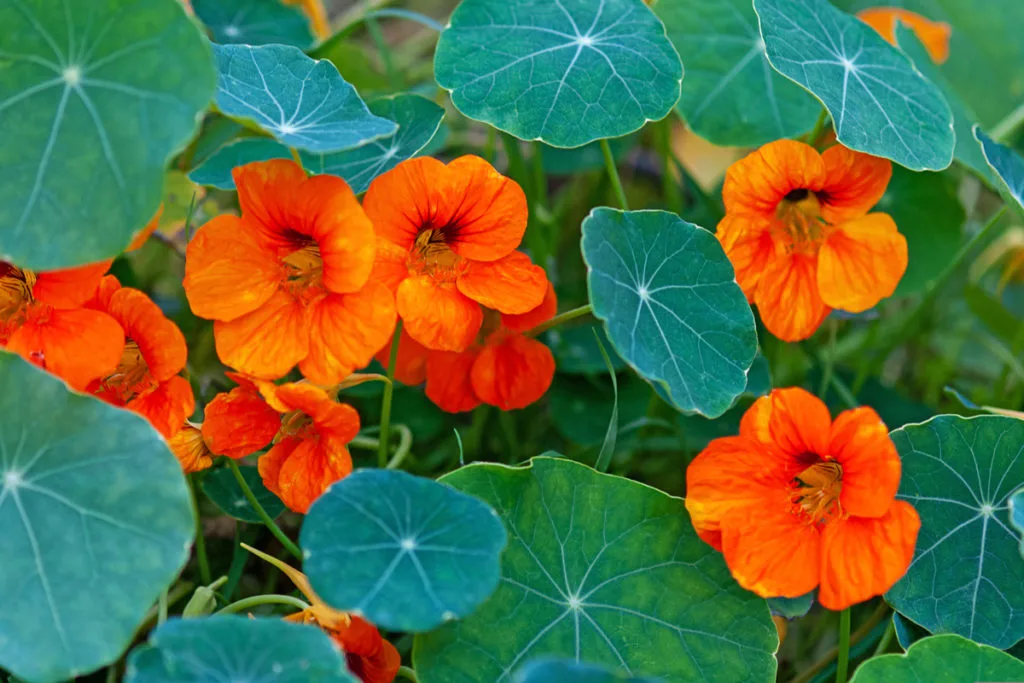
Nasturtiums additionally do a number of jobs within the backyard. They work as a trap crop for aphids, cabbage worms. and whiteflies.
The vivid flowers are additionally edible, including a peppery tang to salads.
7. Cilantro / Coriander (Coriandrum sativum)
Whether or not you name it cilantro, coriander, or each, there’s little doubt it has a novel odor. Whereas about 10% of the inhabitants can’t bear the scent of cilantro, hoverflies appear to adore it.
These hoverflies, in flip, devour thrips, aphids, caterpillars and even corn borer bugs.
8. Oregano (Origanum vulgare)
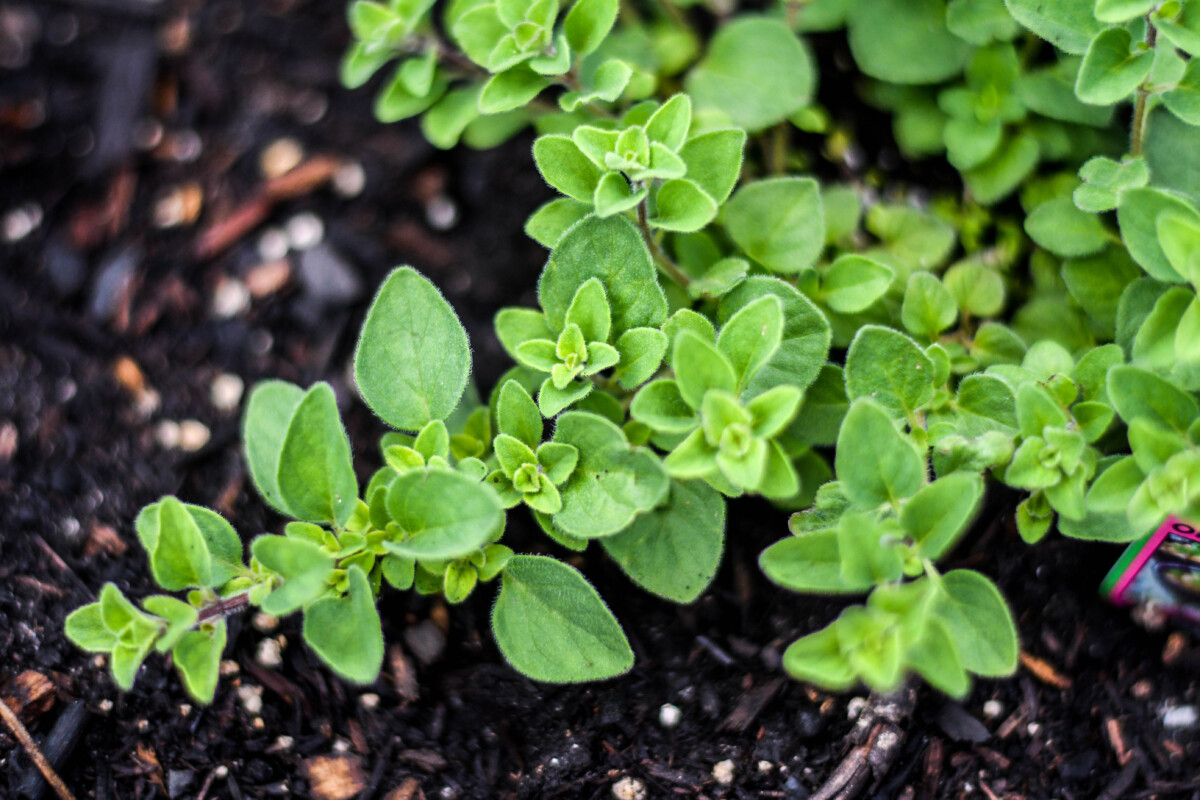
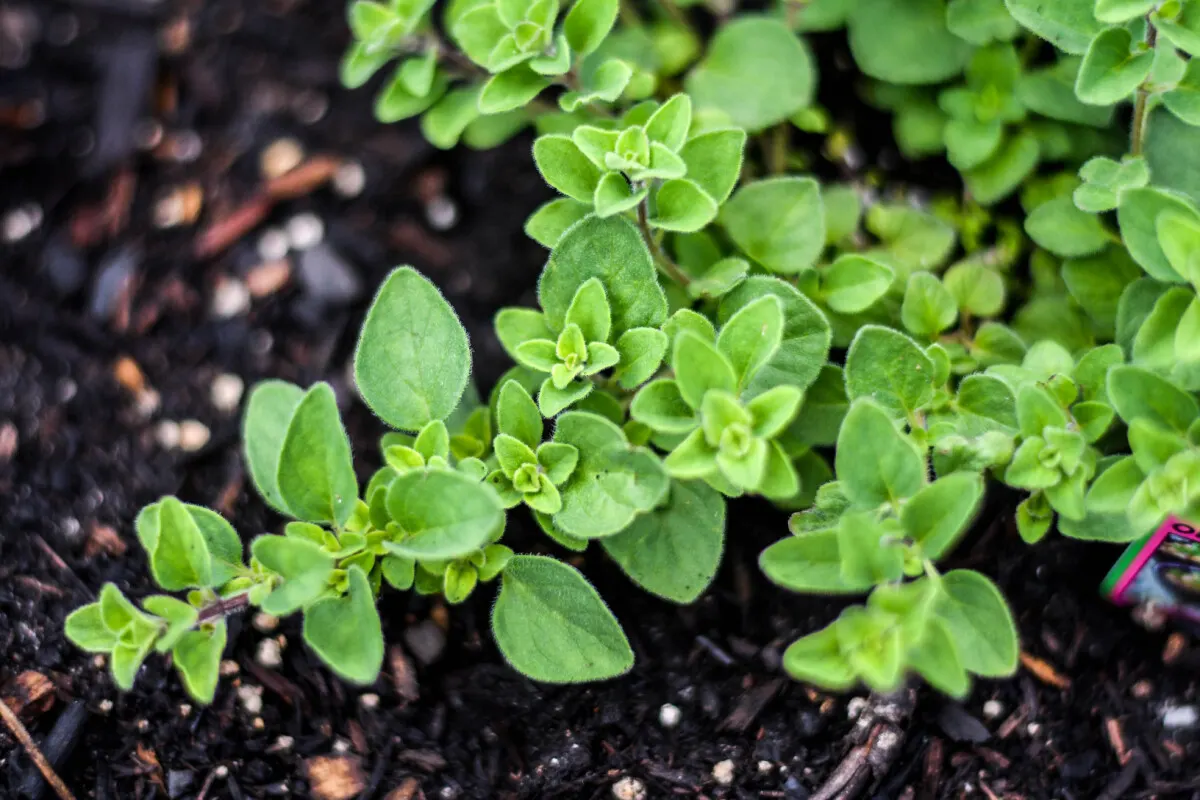
This herb makes an exquisite companion plant for peppers. It’s recognized for the insecticidal properties of its unstable oils.
It additionally appears oregano can cut back the variety of plant pathogens that infect your backyard soil.
Whenever you select low-growing creeping varieties, comparable to Greek oregano, you additionally present a floor cowl round your pepper crops. This retains the soil cool and reduces weed stress.
Everybody Wants a Good Good friend
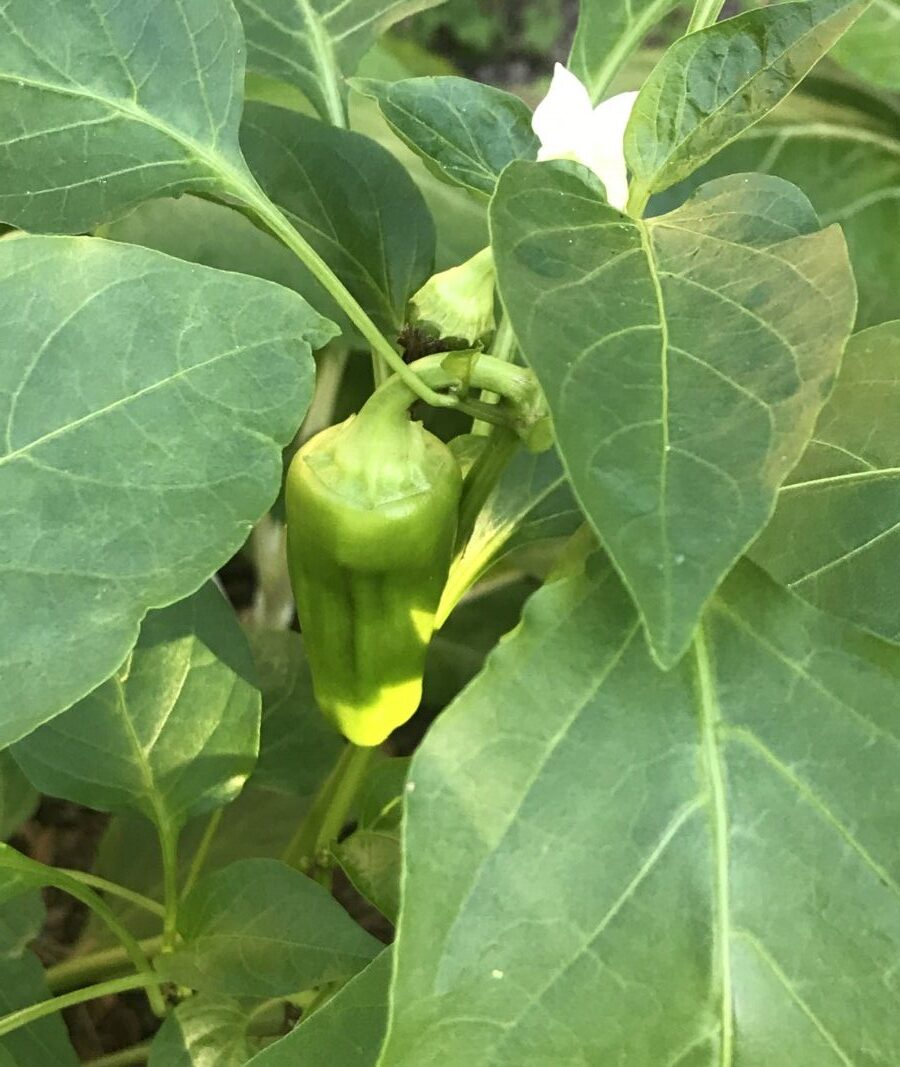
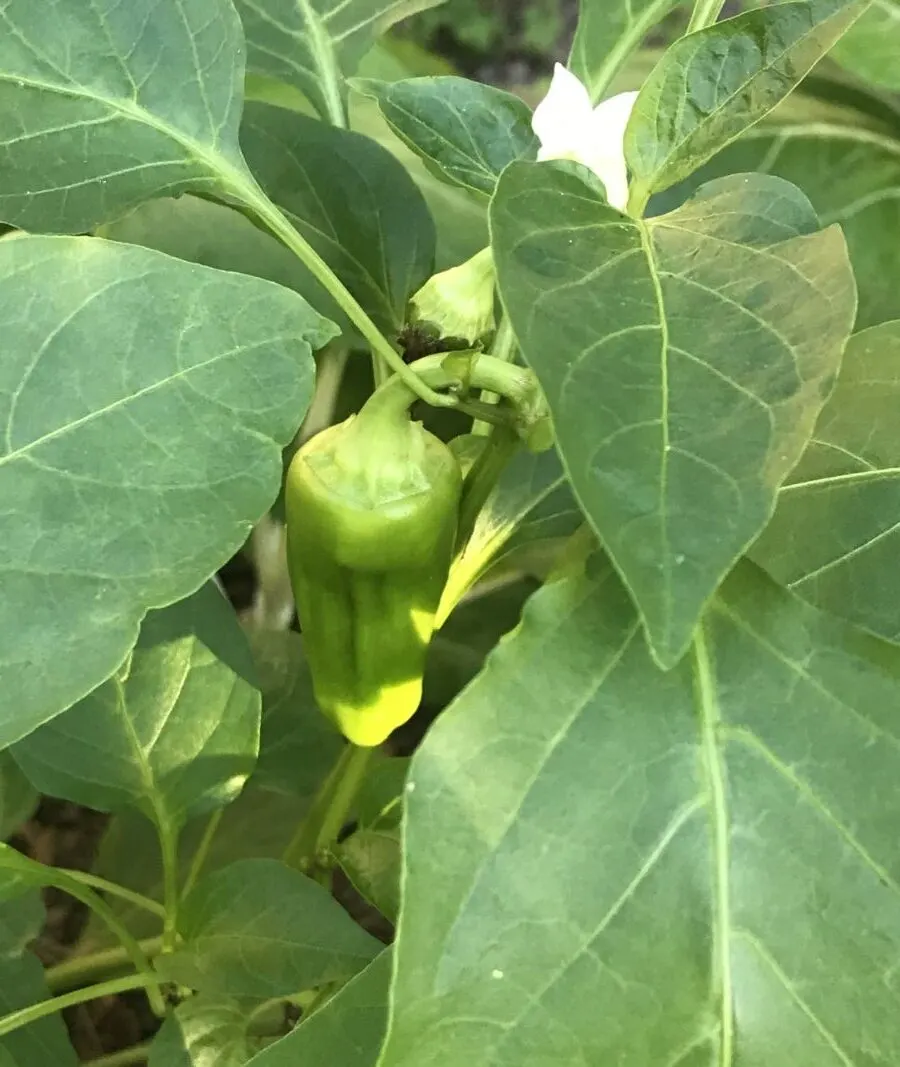
When planning your spring backyard this 12 months, keep away from rising sunflowers, goldenrod and lavender too near your pepper crops. Whereas they attract useful bugs, their allelopathic root zone calls for a long way from different crops.
Most temperate zone gardeners received’t have hassle maintaining brassicas away from their pepper crops. Brassicas are cool-season crops and are typically harvested properly earlier than it’s time to plant peppers.
With my delicate winters, I’ll should rethink how I overwinter my pepper crops. I solely have just a few months of the 12 months to develop brassicas, so maybe I ought to overwinter my peppers in containers as an alternative of within the floor.
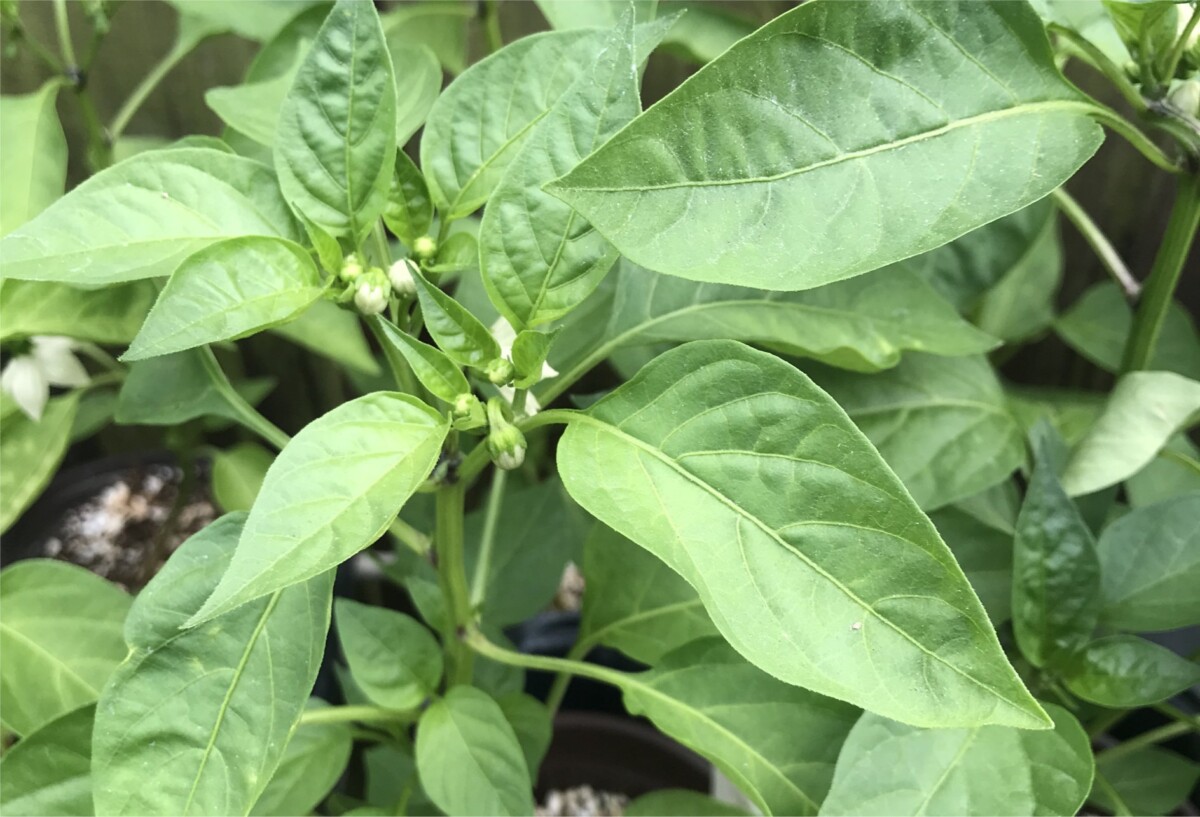
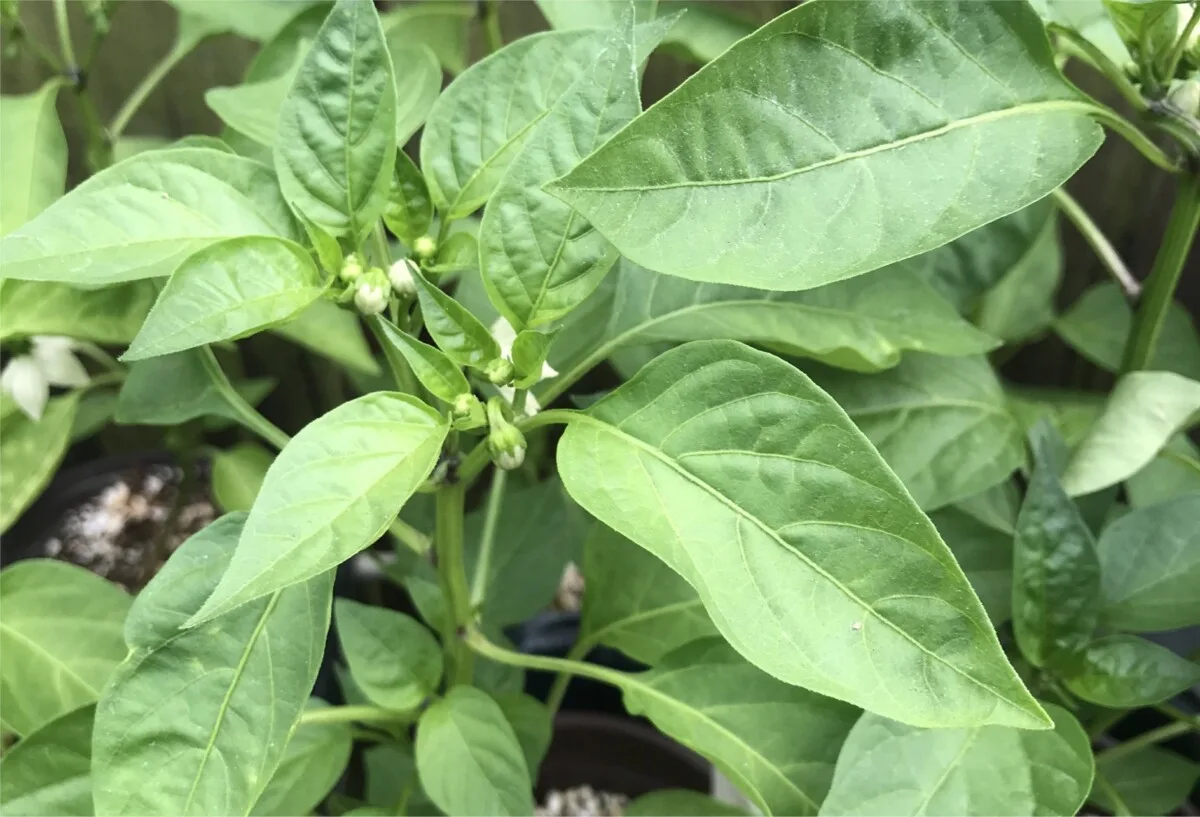
Profit from good companion crops when planning your backyard. Fortunately, it’s not tough to house just a few marigolds or oregano crops all through your backyard beds.
The perfect companion crops for peppers additionally profit different backyard greens, notably nightshades like tomatoes and eggplant. Many present double obligation as culinary herbs, in addition to bringing coloration and wonder to your vegetable backyard.

Get the well-known Rural Sprout e-newsletter delivered to your inbox.
Together with Sunday ramblings from our editor, Tracey, in addition to “What’s Up Wednesday” our roundup of what’s in season and new article updates and alerts.
